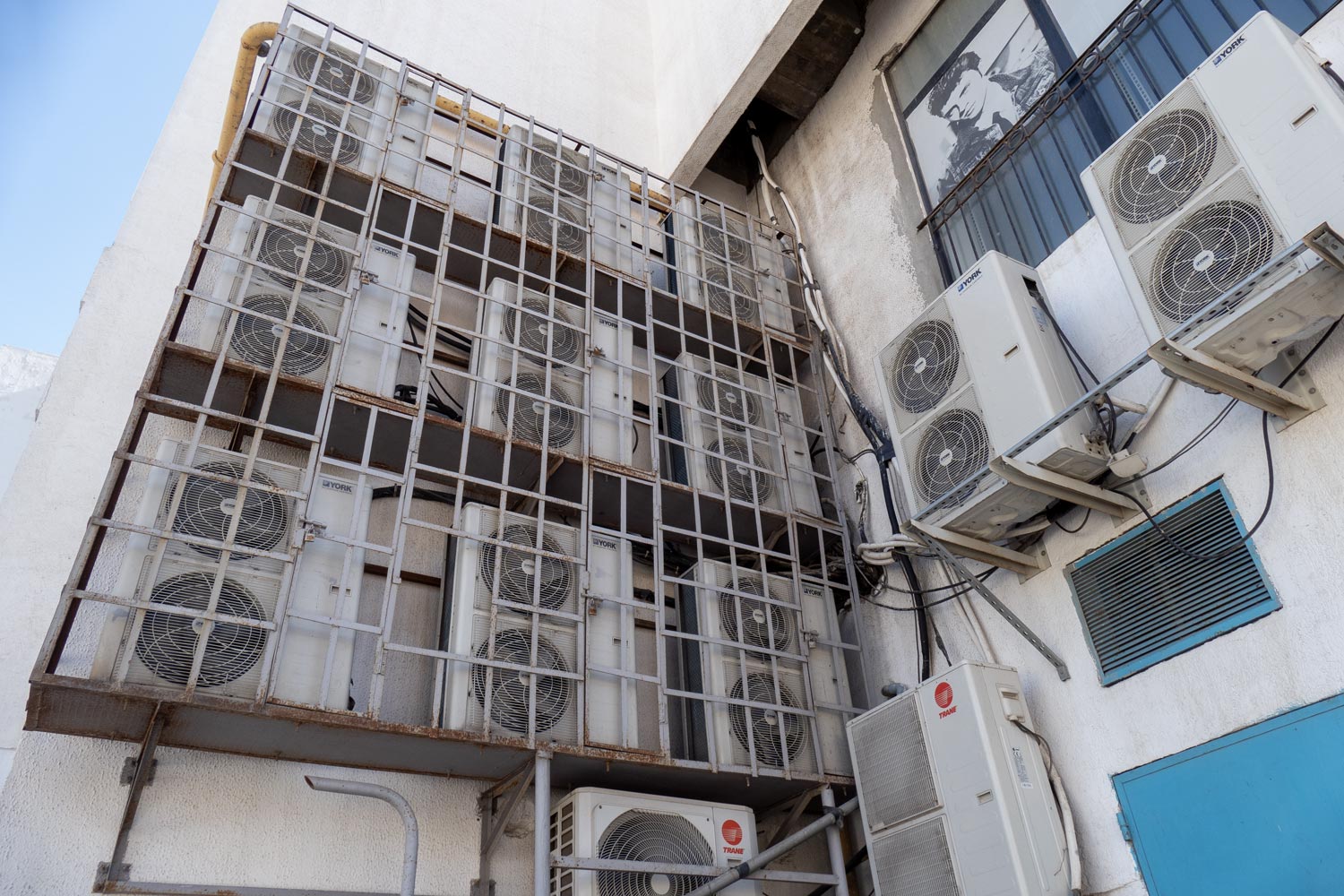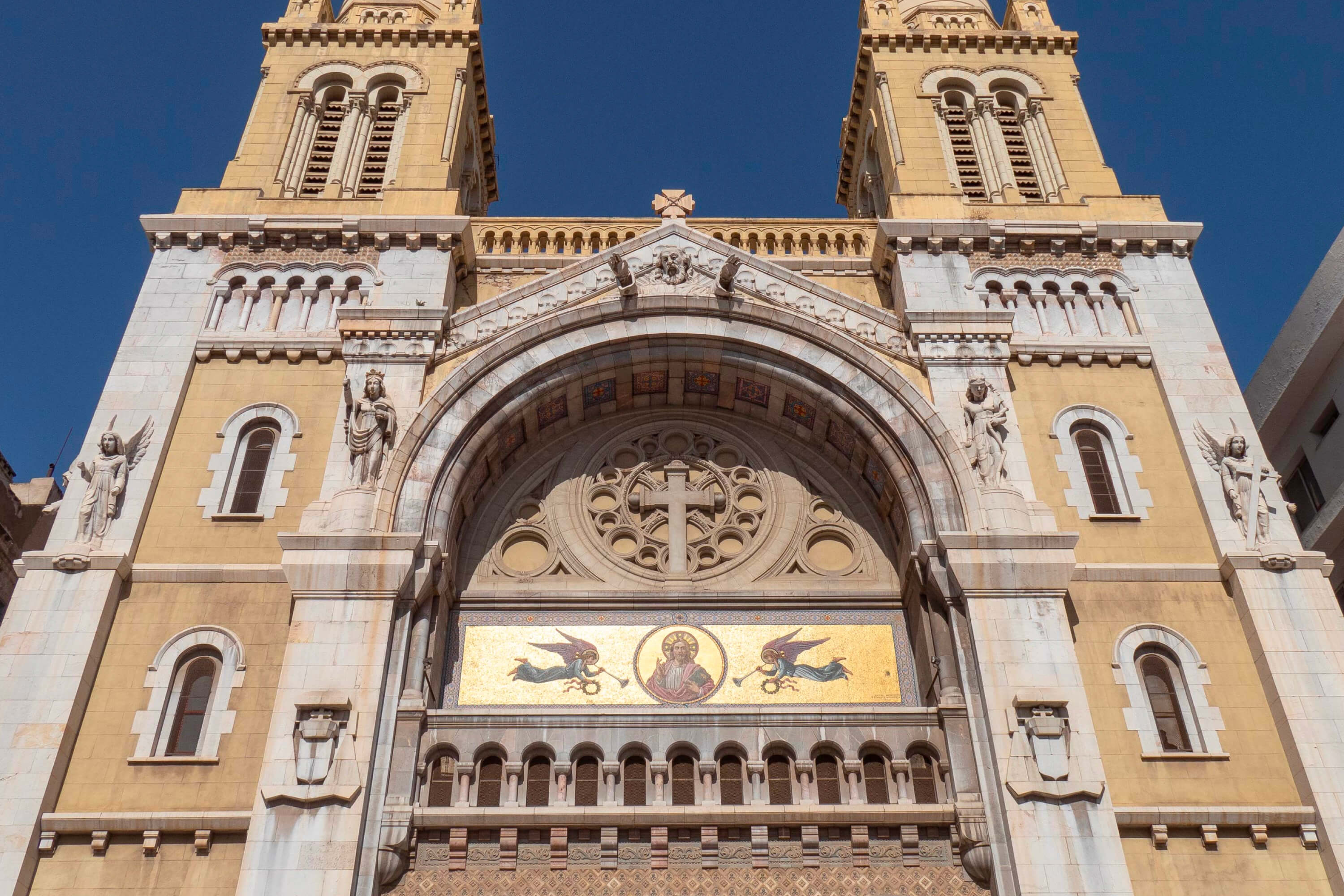Tunis
Tunisia is a small country in Africa that, like Morocco, lies in Africa only bodily; by soul, it is the Middle East.
Tunisia is well-known for two things: extremely dumpy resorts for peasants and fruit vendor Mohamed Bouazizi, who in 2011 doused himself with gasoline and set on fire, which has been extinguished in the whole Middle East together by NATO and Russia.
However, the Tunisian revolution itself did not significantly impact the country and was relatively peaceful. The country’s economy declined later, in 2015, when ISIS carried out three terrorist attacks in one year. It was then that tourists began to fly around Tunisia, and since then, the country has not yet fully recovered.
The city of Tunis
The capital of Tunisia is the city of Tunis.
Once, the country of Carthage was located where Tunisia is now, and near the city of Tunis was the capital of the state of Carthage, the city of Carthage.
Today, Tunis presents a sorry sight. The city is overgrown with garbage, street vendors, and broken roads.
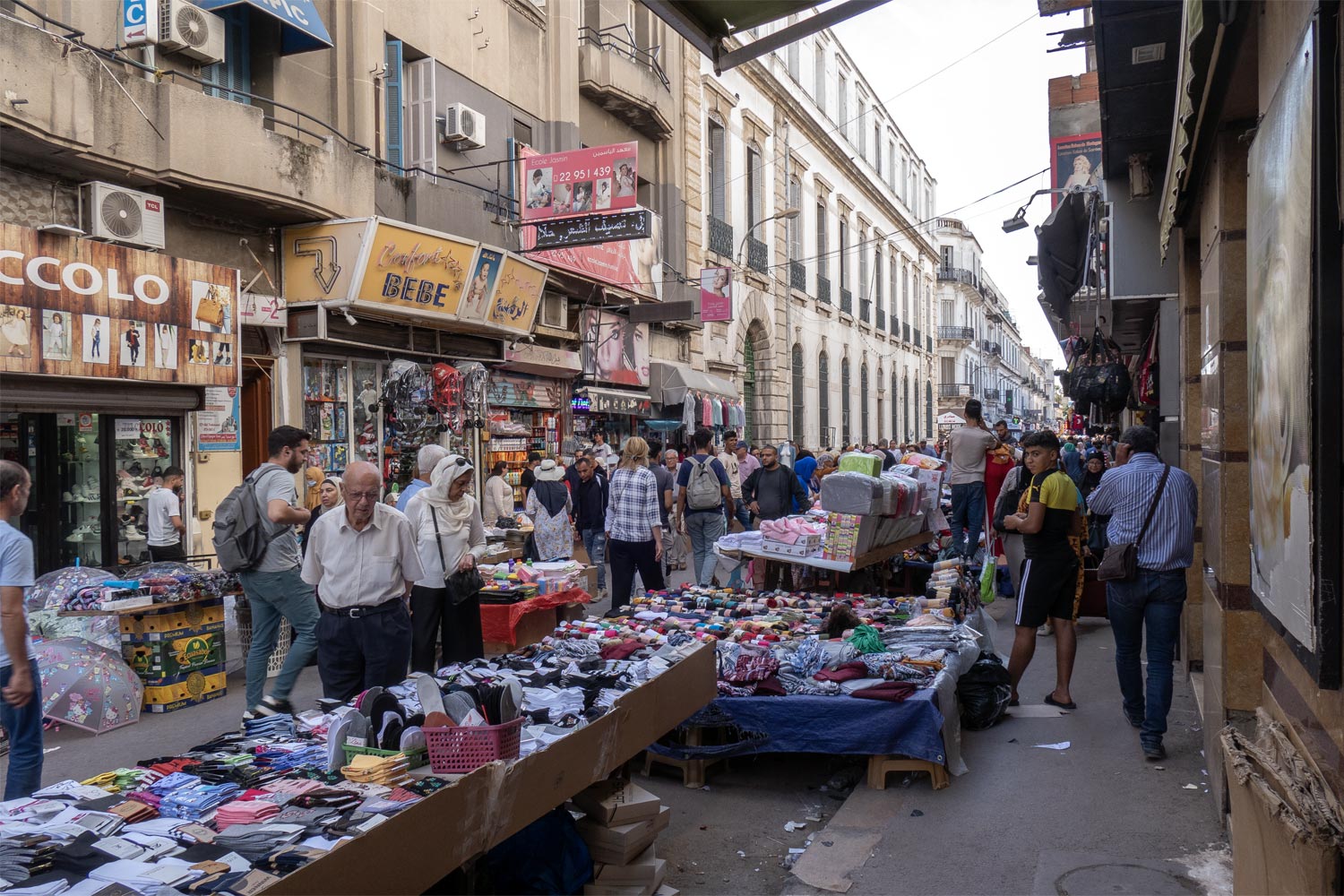
French architecture is barely visible behind the signs and peeling plaster.
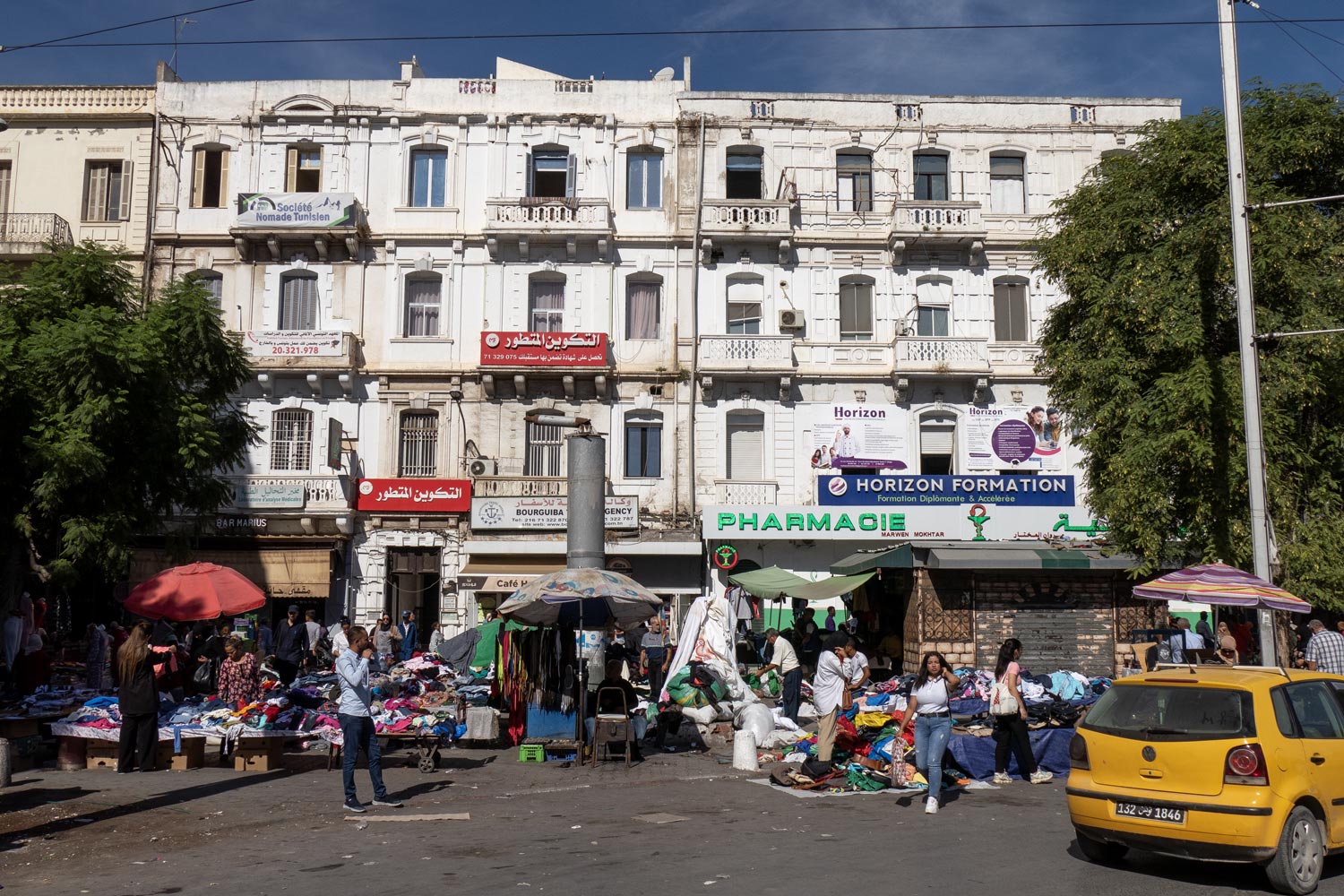
The city is roughly divided into two parts: the Arab and the French. In the Arab part, also known as the medina, lies the old city with narrow streets and caravanserais. The French part resembles a European city with African flair.
The Tunis medina cannot be compared to Fes or even Casablanca. It is a rather dull, small, and foul-smelling district of old houses.
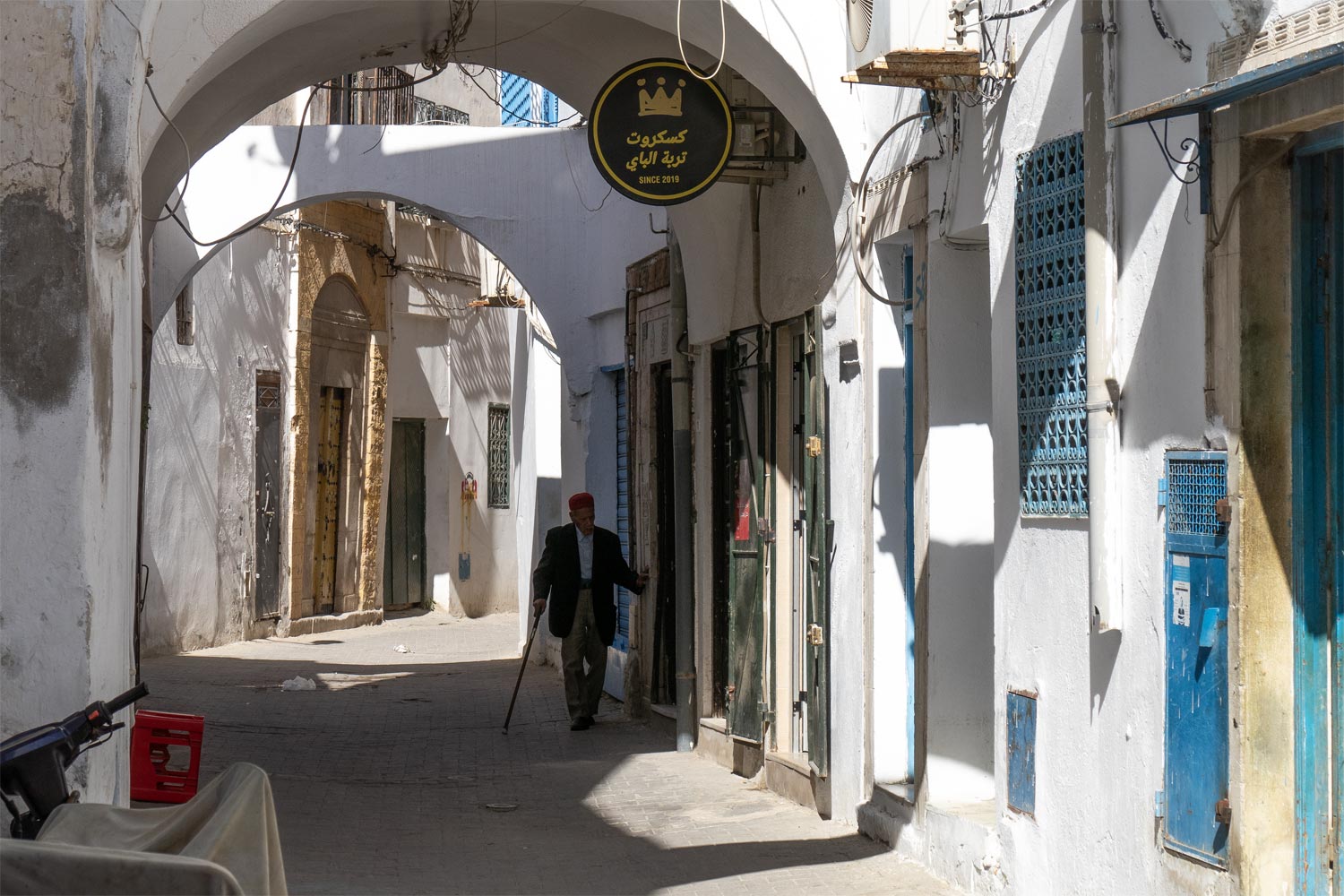
Of course, there are beautiful spots here. Occasionally, you might come across an arch covered with ivy — and it’s instantly charming.
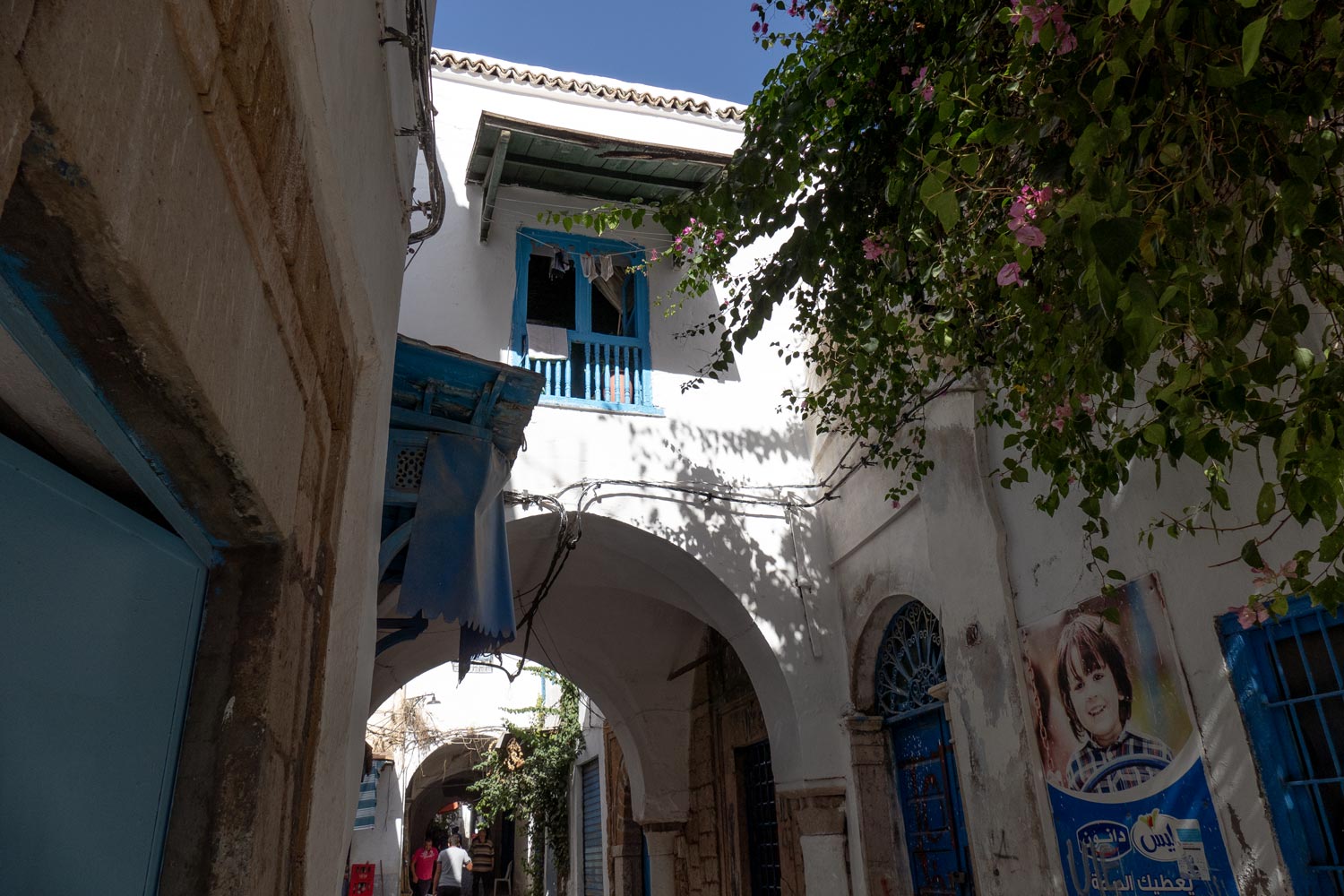
Unfortunately, these are rare islands. Most of the medina is unbearably dirty. A usual sight: either a pile of garbage or an indelible stain from it at some corner.
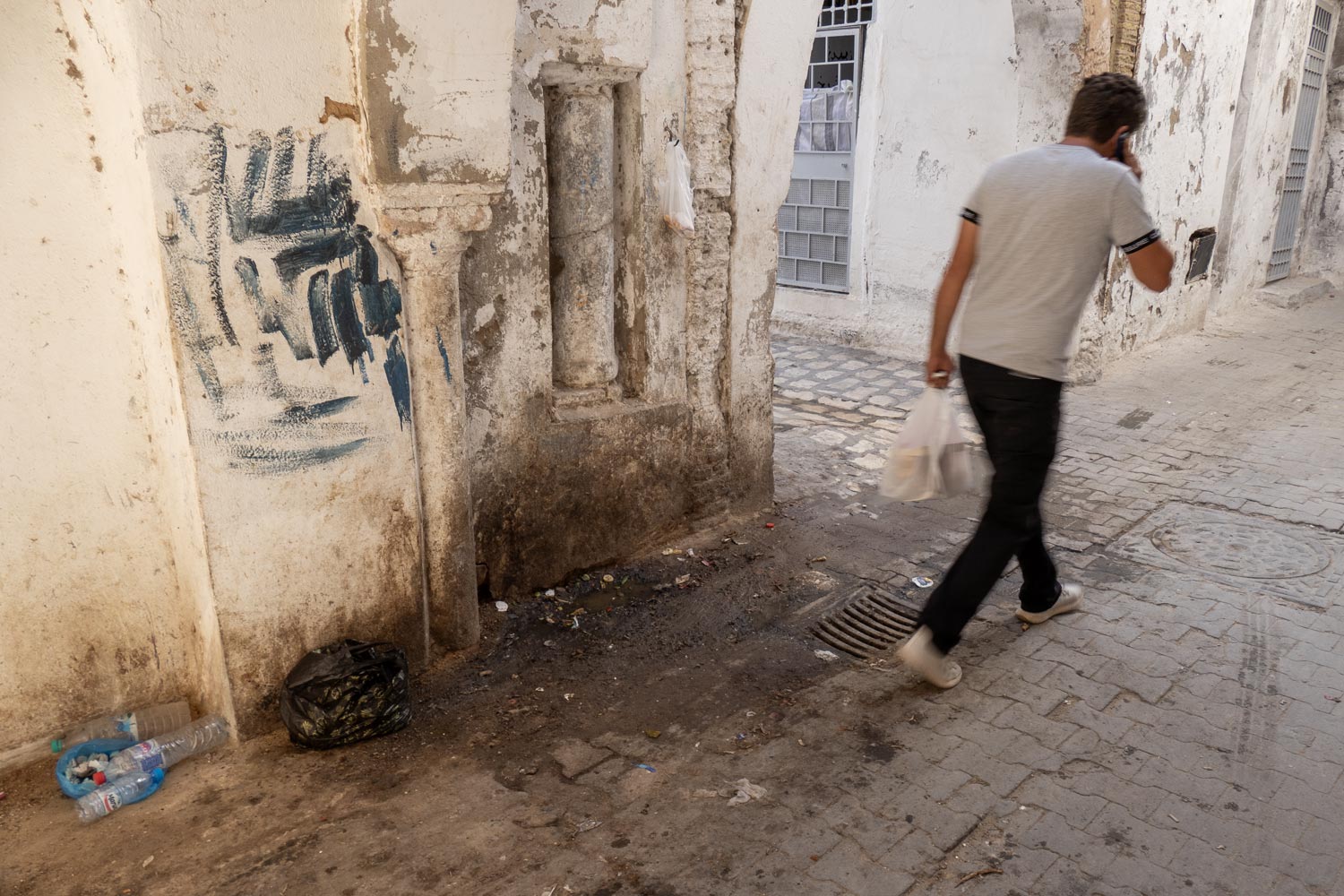
The piles of garbage are not necessarily large. Quite the opposite: there isn’t much garbage in general. But it’s usually rotting food scraps, which in the heat smell like a village toilet.
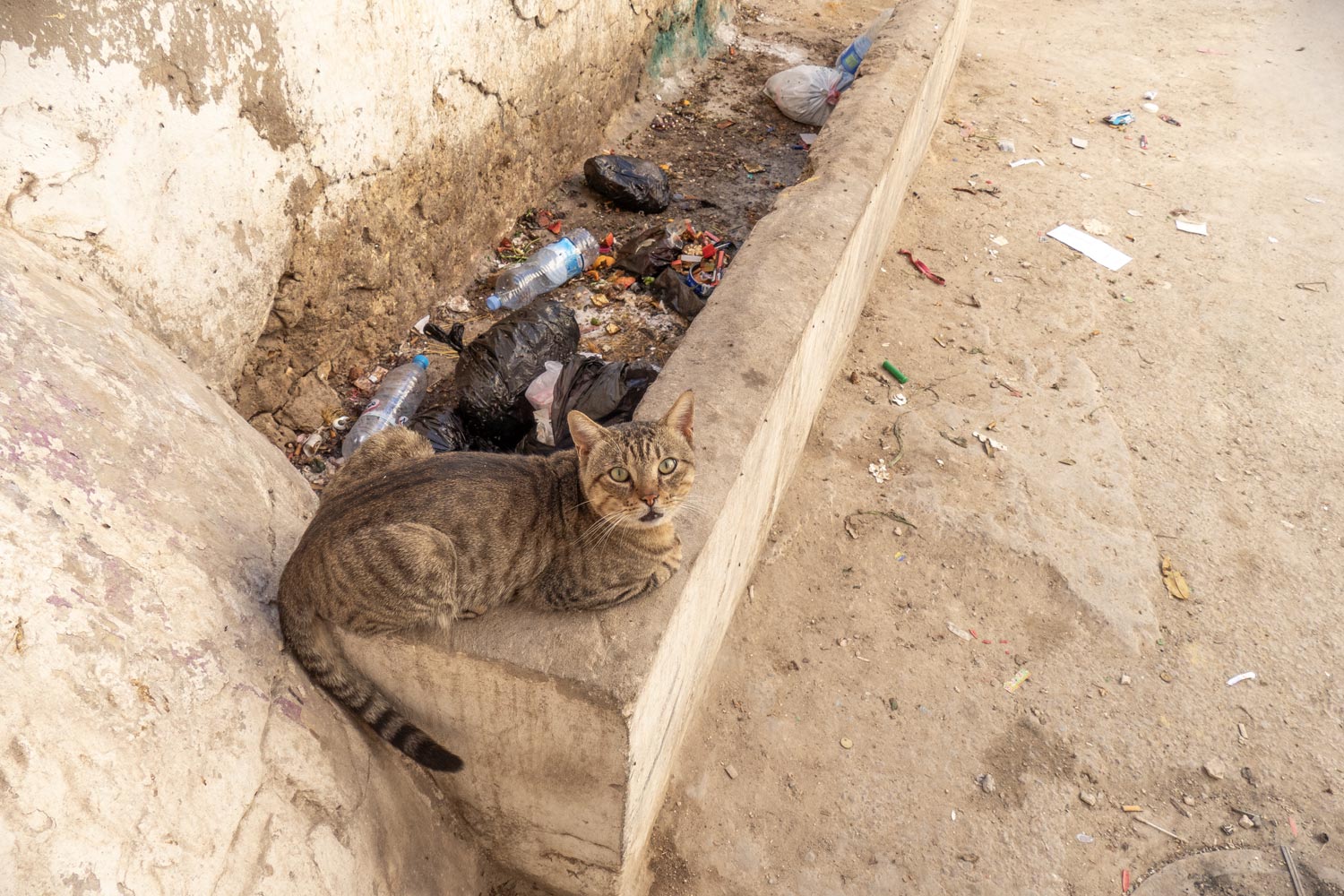
All this compost is eaten by local cats, which you really don’t want to pet.
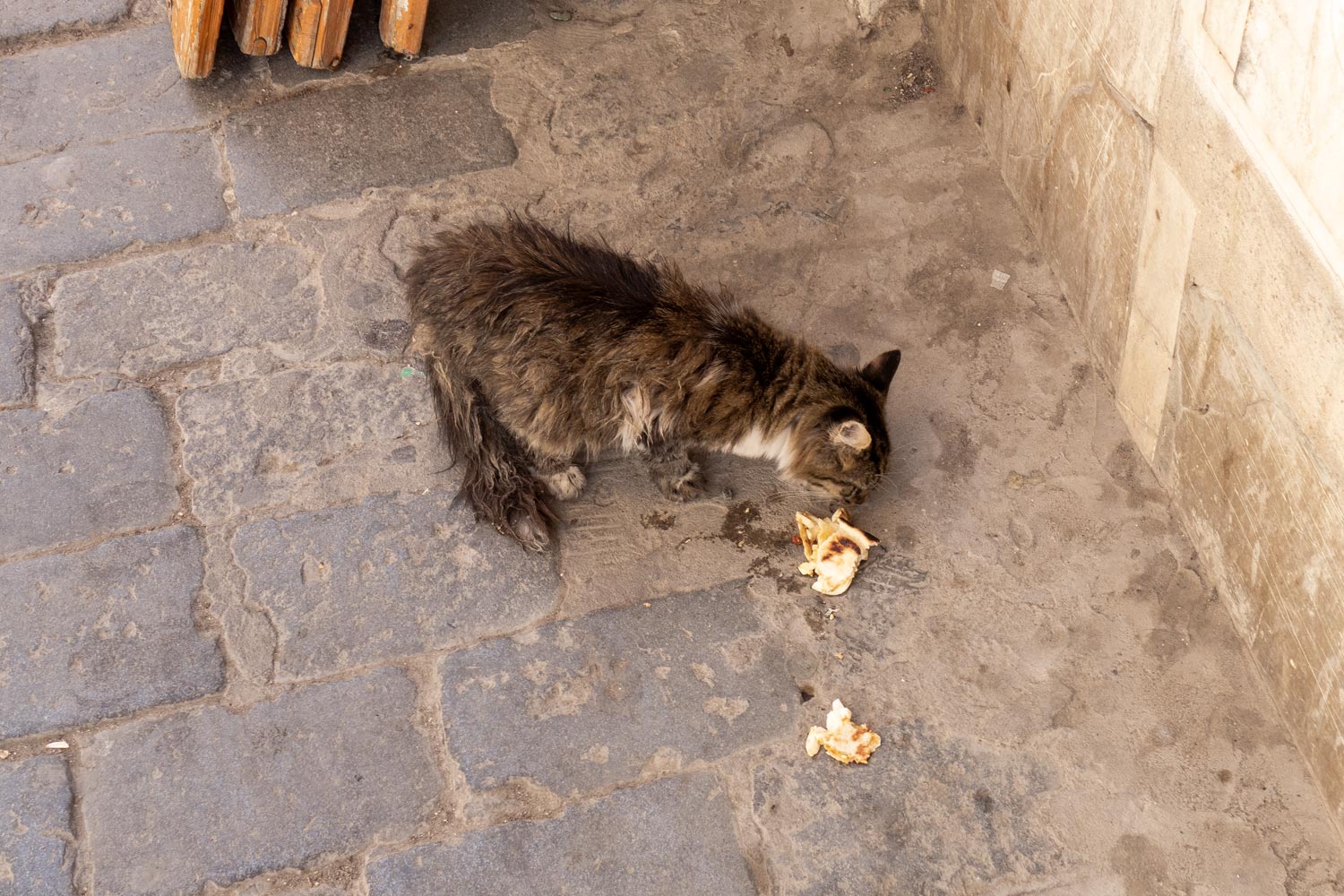
The streets of the Tunis medina are narrow, long, and resemble a labyrinth. This is rather an advantage: it’s not too hot here even in summer.
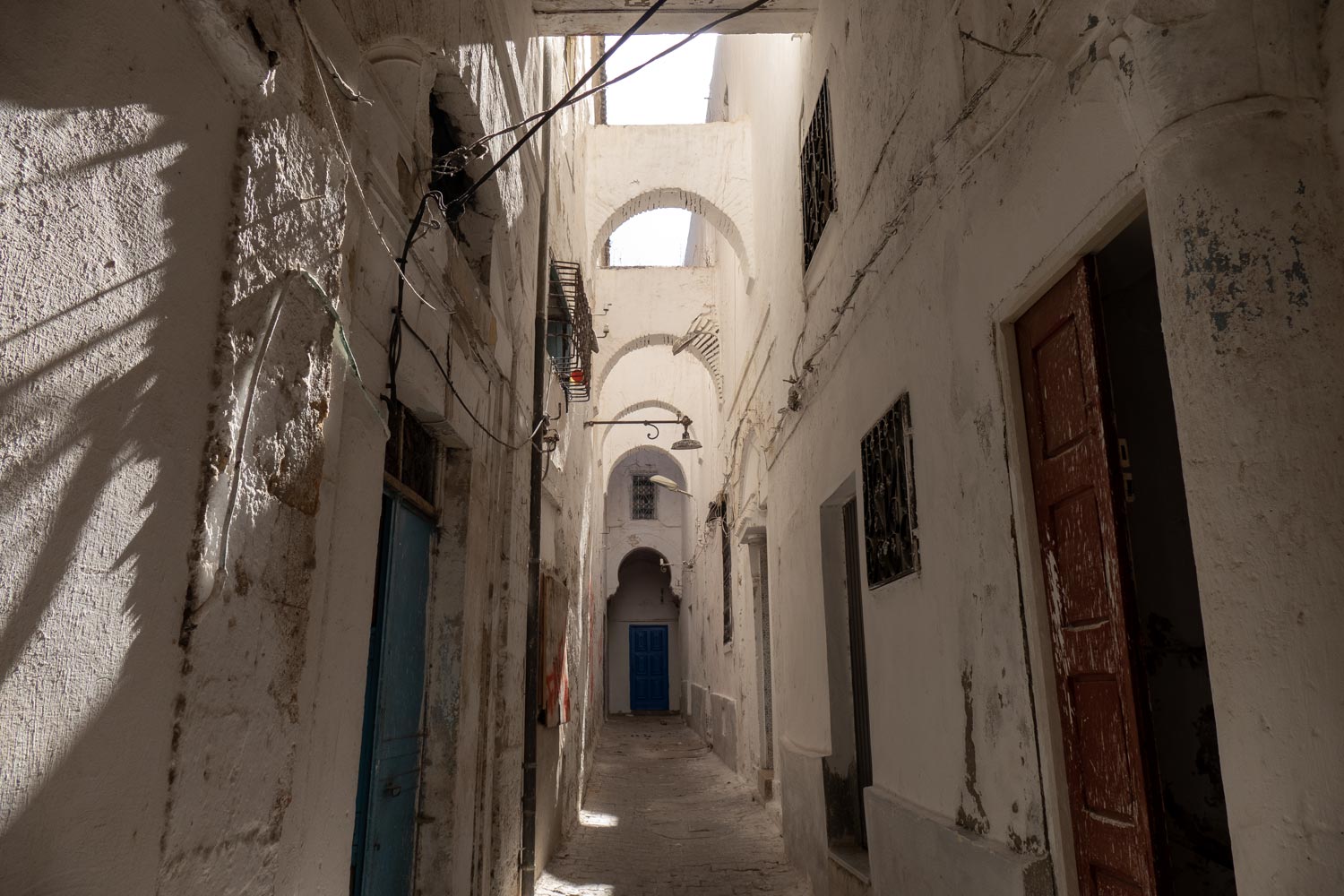
It’s extremely difficult to drive a car through such streets (although Tunisians manage), so people either walk through the medina or use two-wheeled transportation.
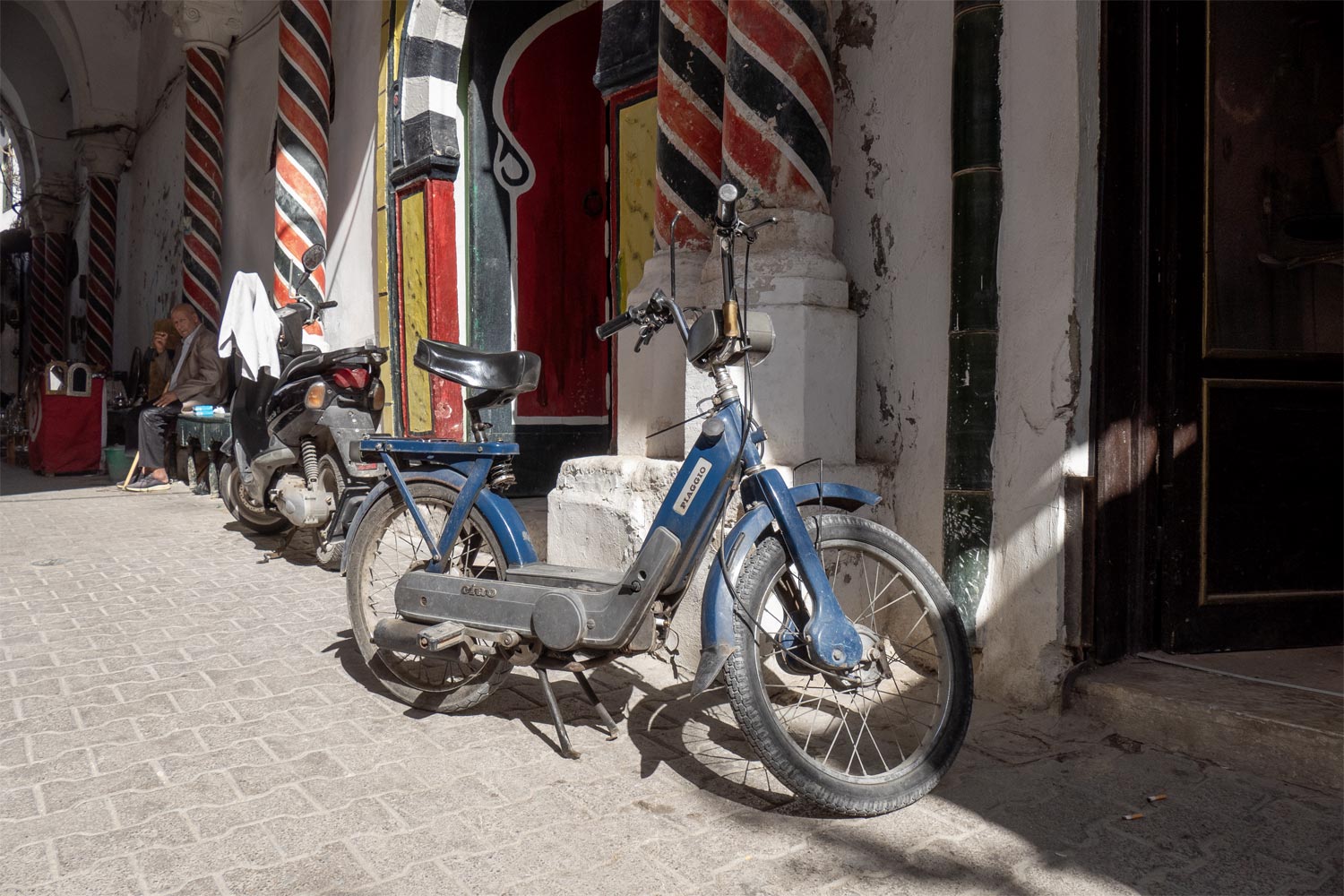
It’s surprising that even in such conditions, the medina is extremely dusty. Do they bring it in their pockets or something?
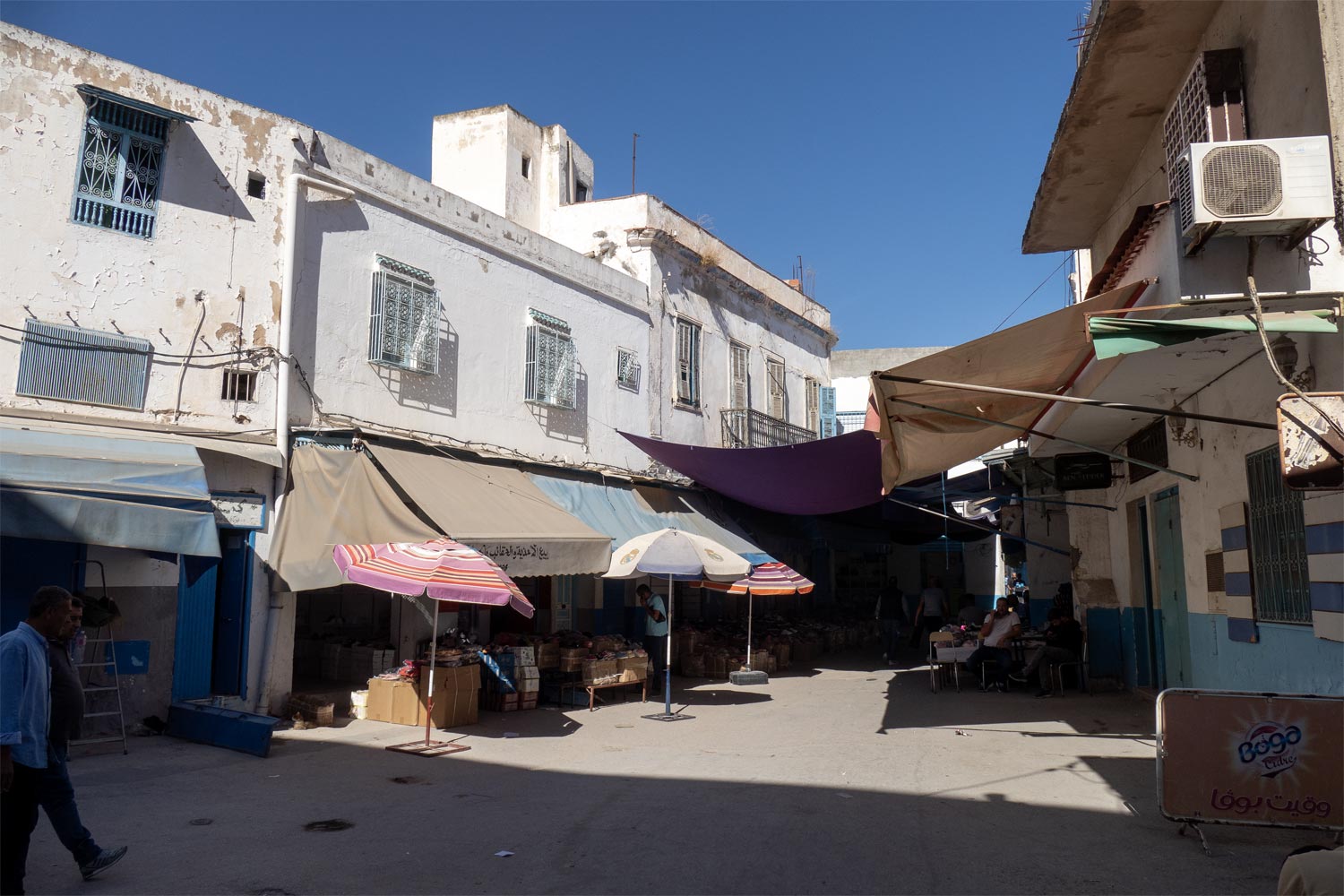
The only interesting feature of the medina in Tunis is the columns embedded randomly in the walls. As far as I understand, it was much more beautiful here once, and the columns were part of the architecture. Then everything was built over with concrete structures, and the columns were left for decoration.
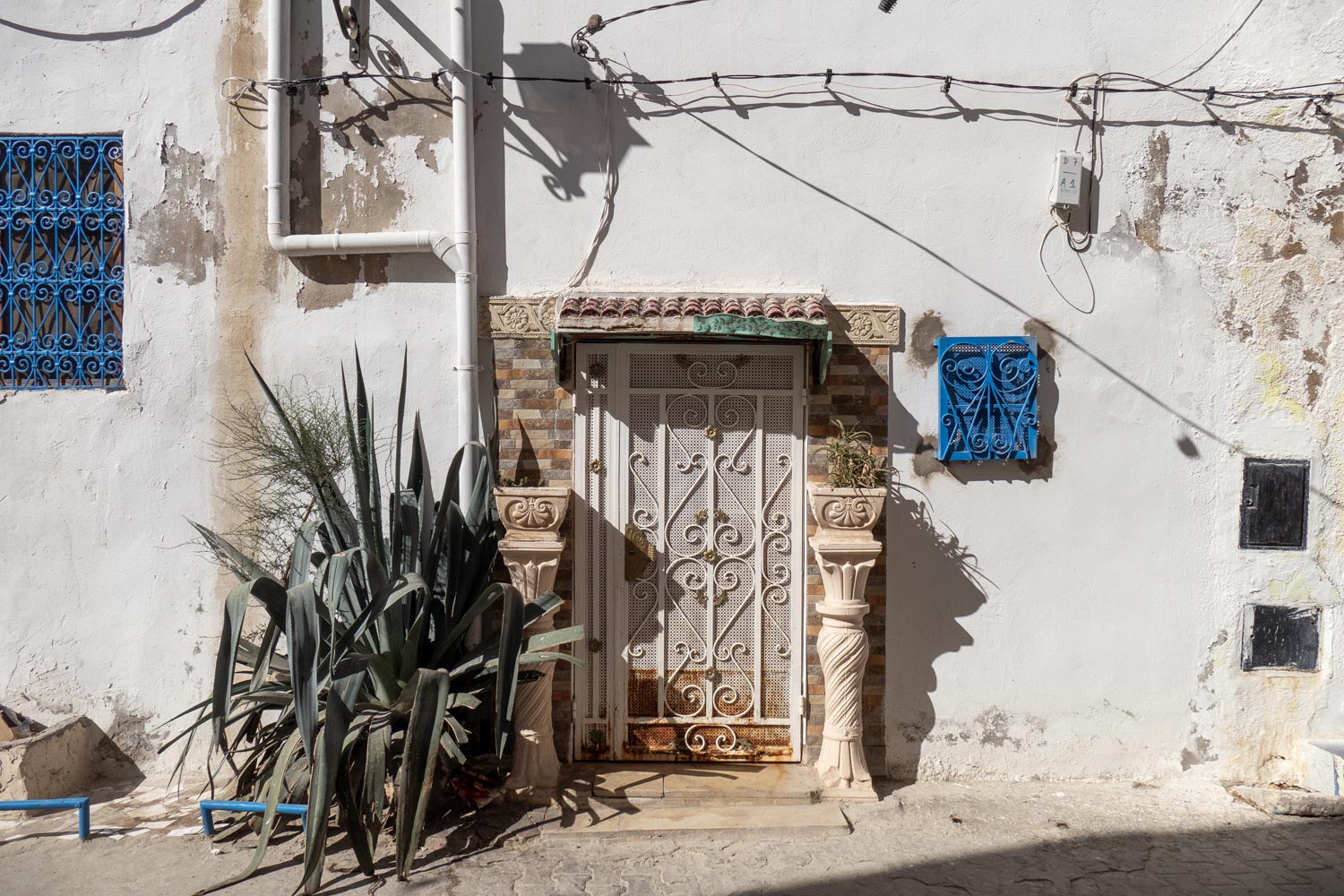
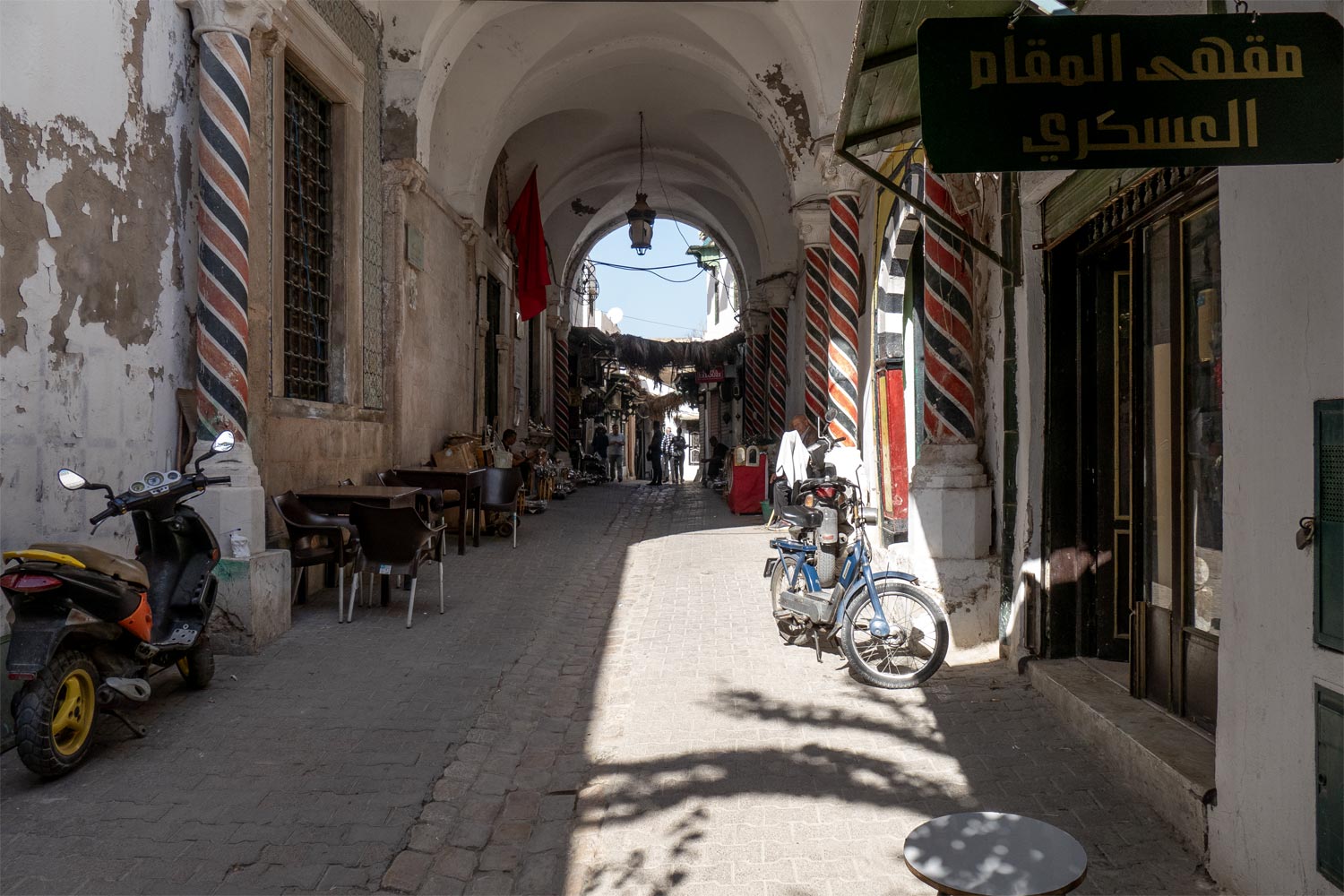
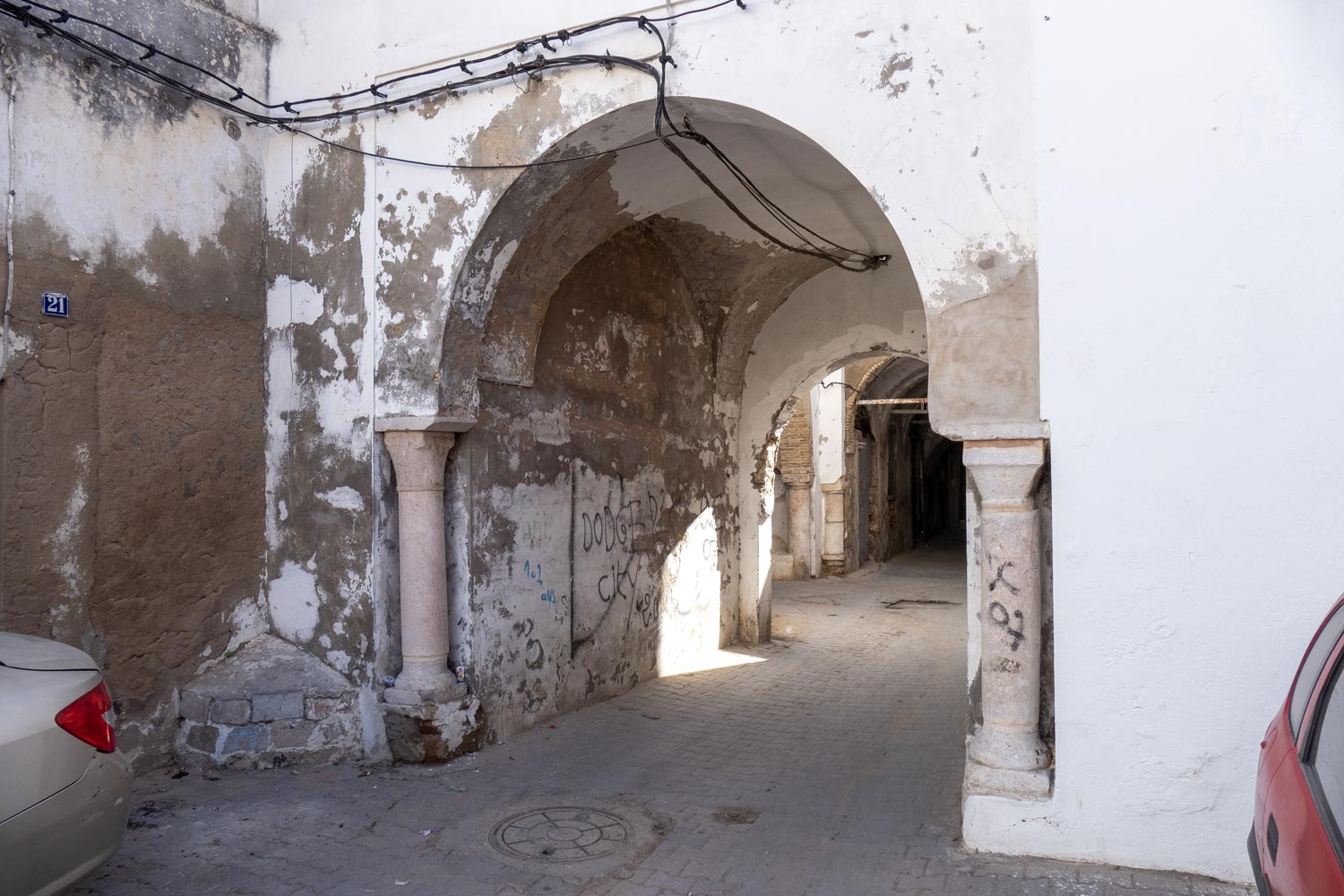
Tunisia is so poor that there isn’t even a proper Arab bazaar here. If you just walk down the streets, you’ll come across absolute junk that you don’t even want to look at.
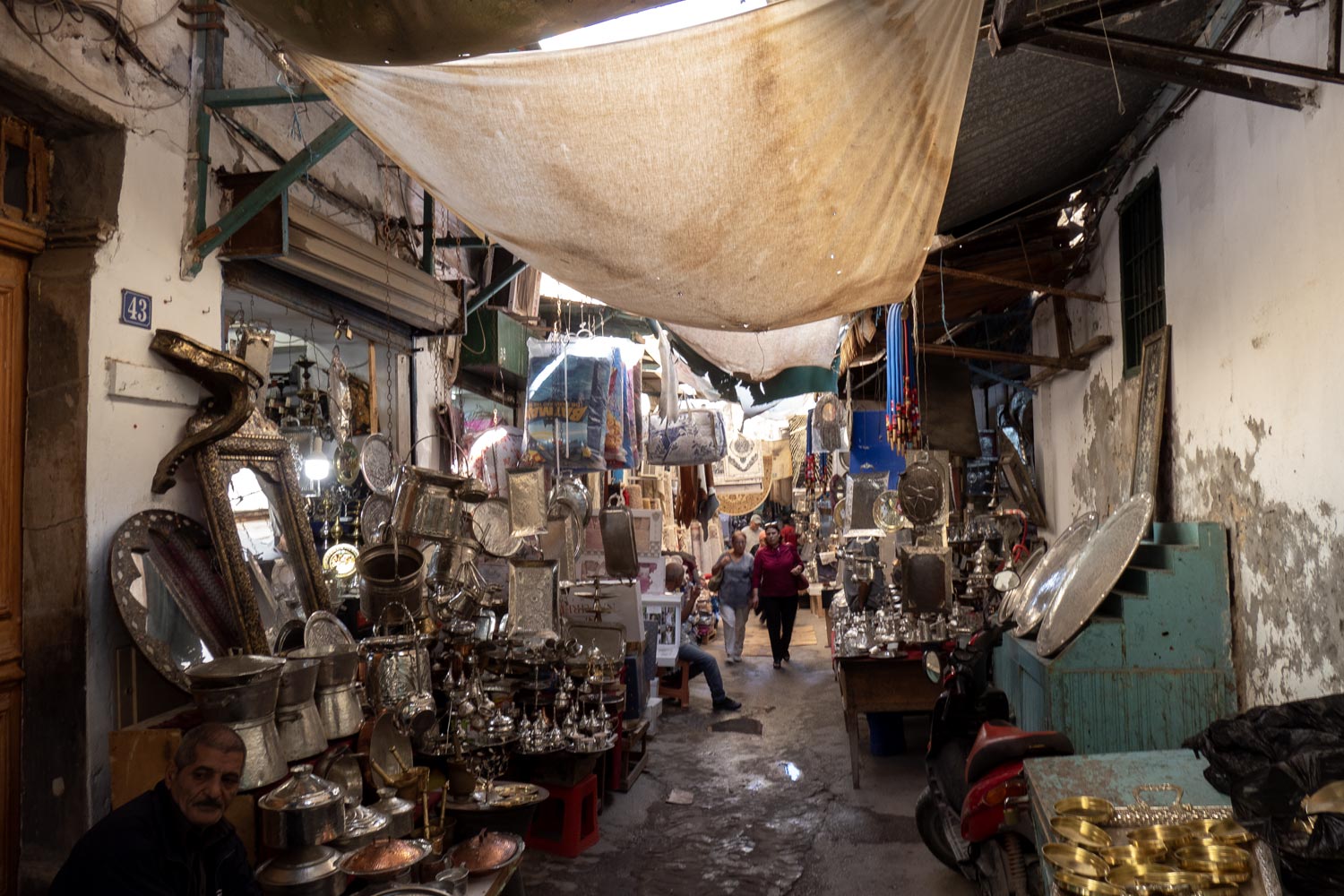
The local big bazaar is slightly better, but still incredibly dull. It cannot be compared to the copper and gold arrays in Fes and Marrakech.
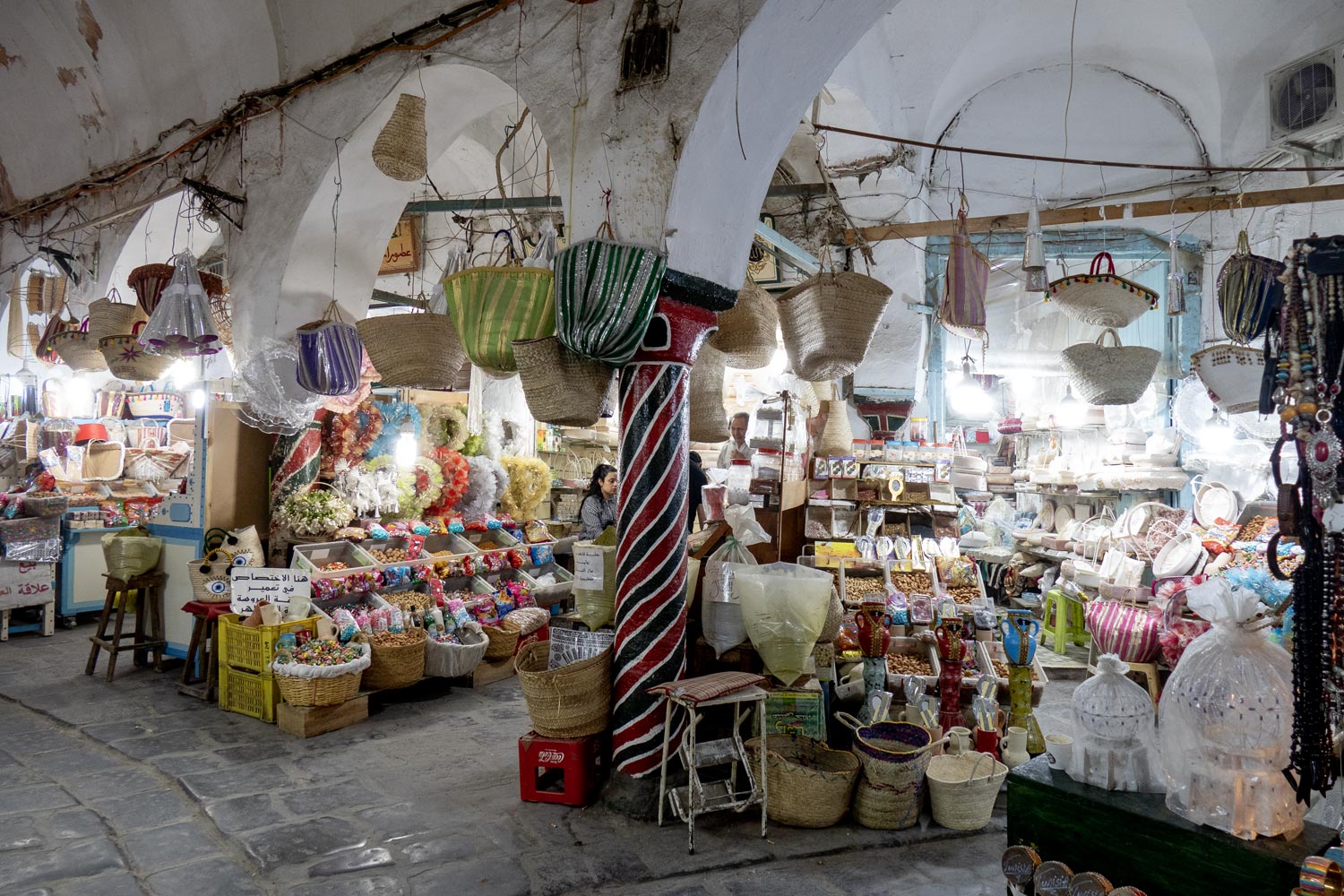
In the very center of the medina is one of the oldest mosques in the world, built in 698 AD — just 66 years after the death of the Prophet Muhammad. The oldest Islamic university is also located at the mosque.
It’s surprising that none of this is of any interest. The mosque can’t even be properly photographed because it’s so squeezed between buildings. Only the minaret in Moroccan style is clearly visible.
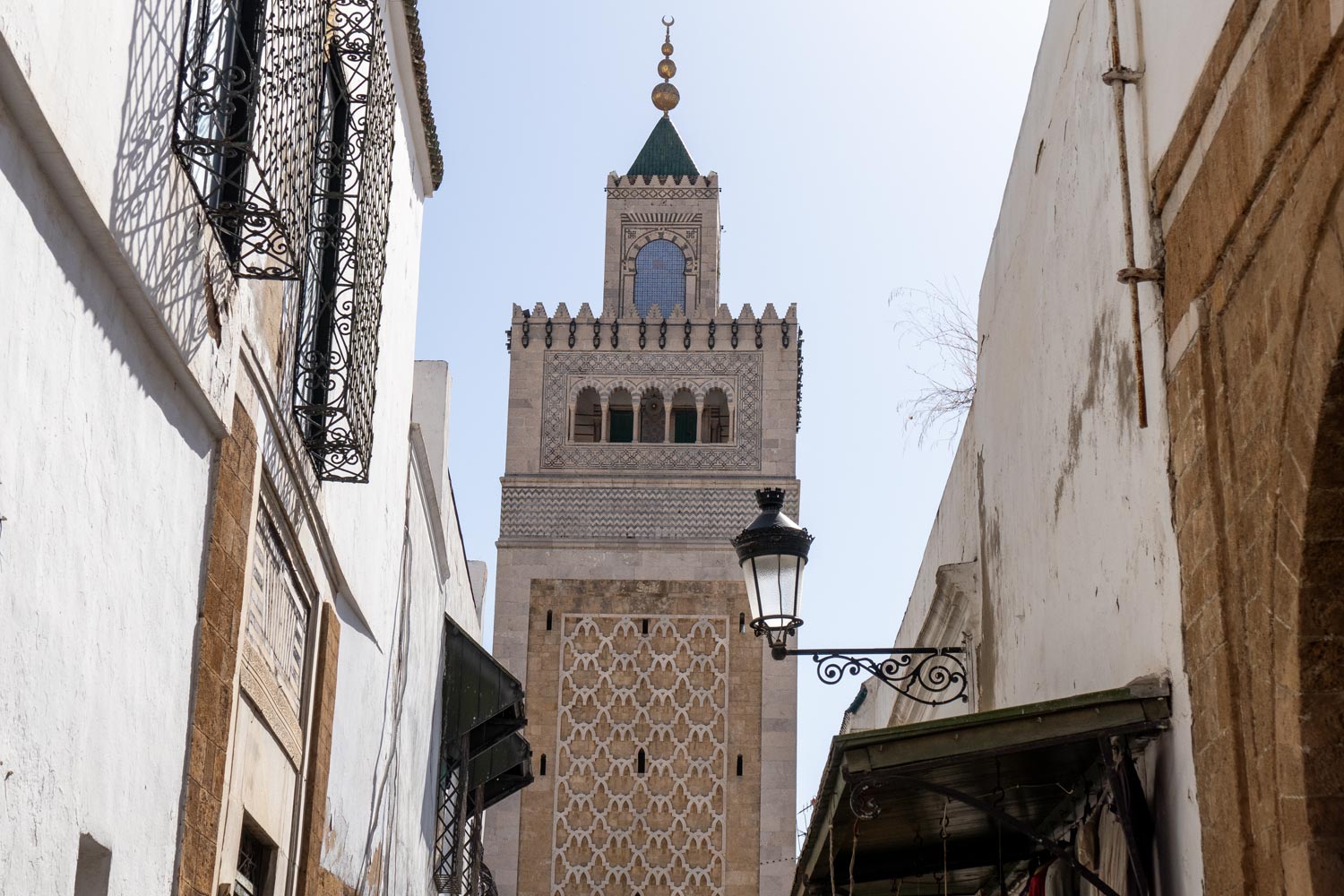
Next to the mosque, there are a couple of decent shops, probably the only ones in the entire city.
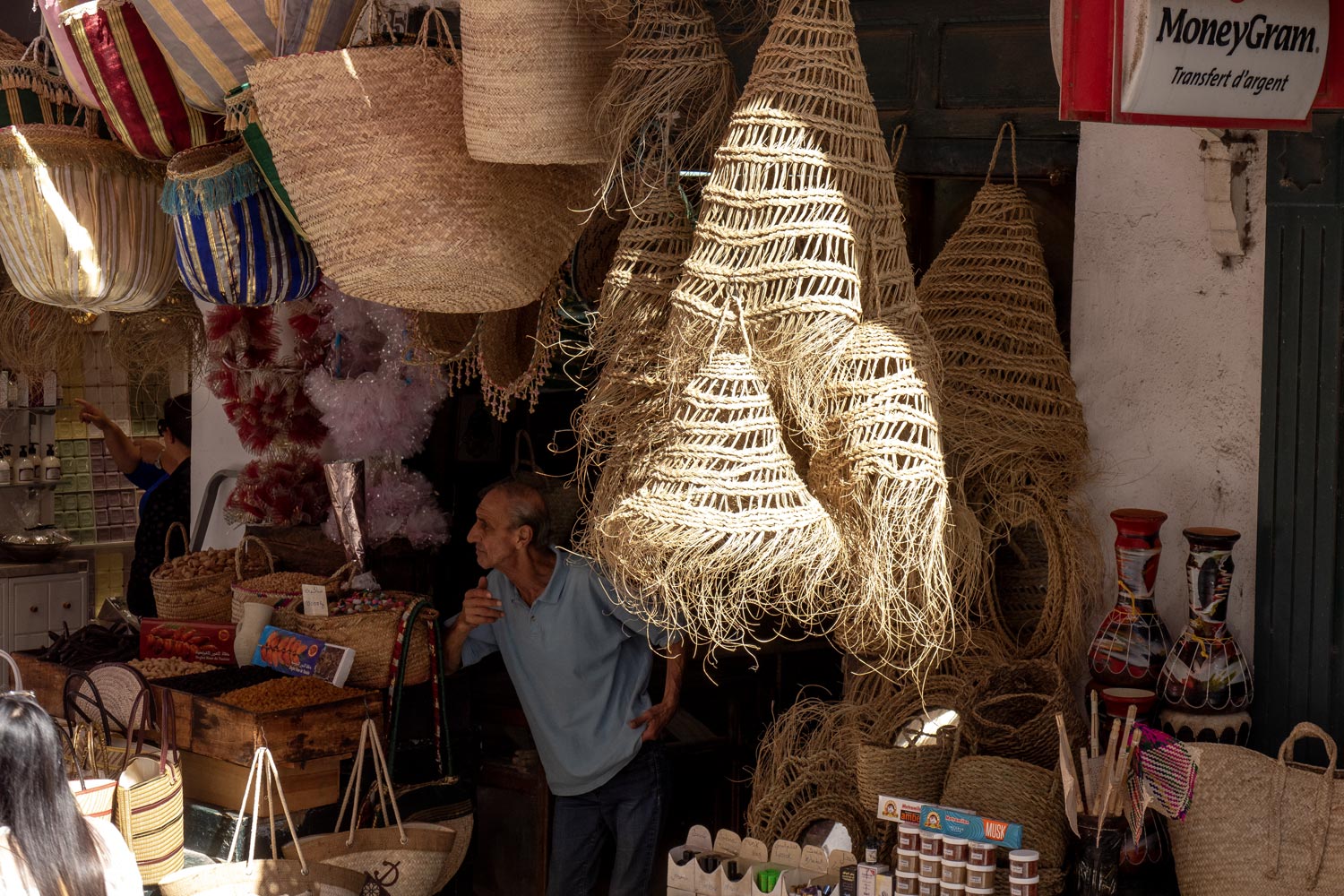
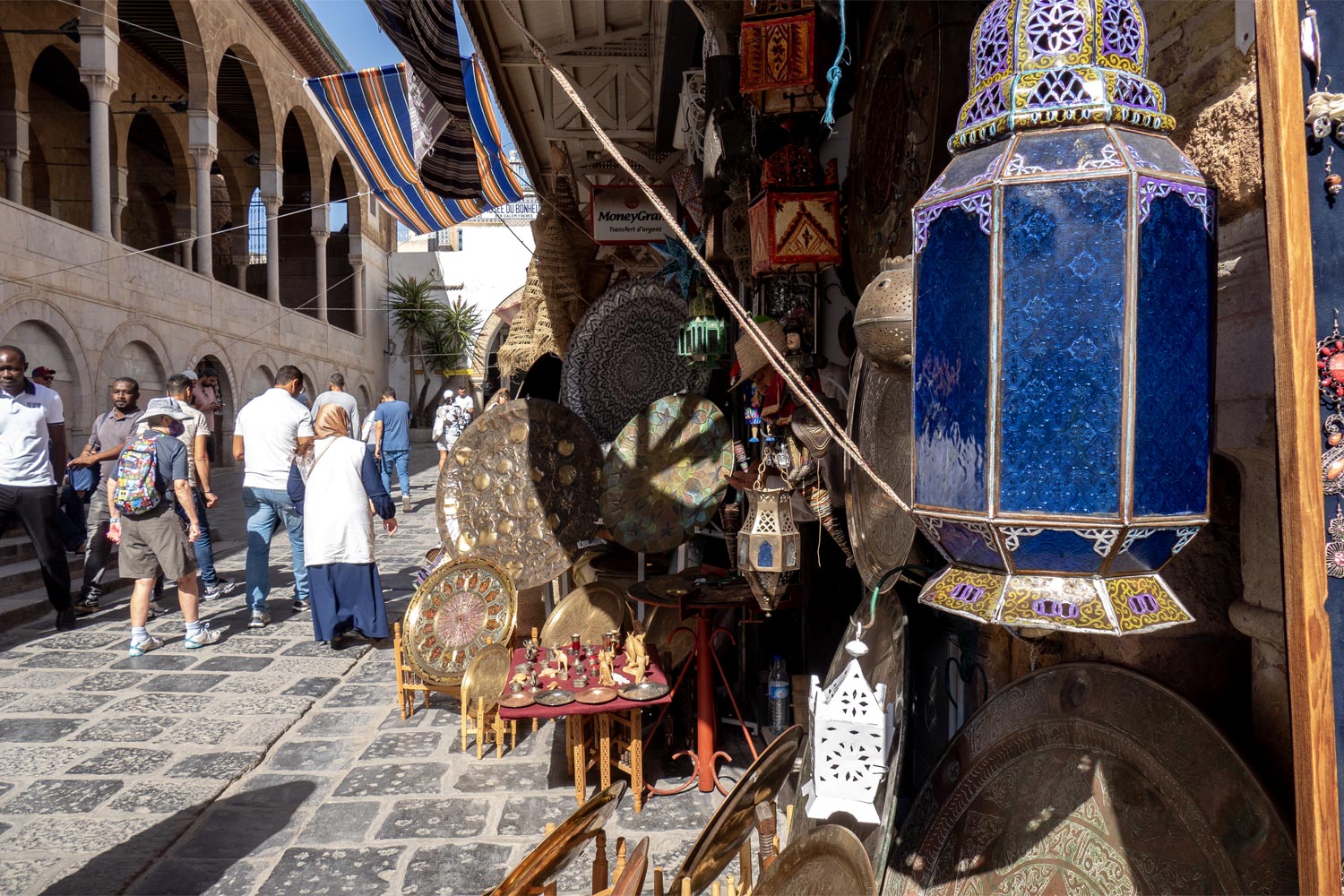
Passersby are mostly somber and tired. It’s not surprising, as the country faces one crisis after another.
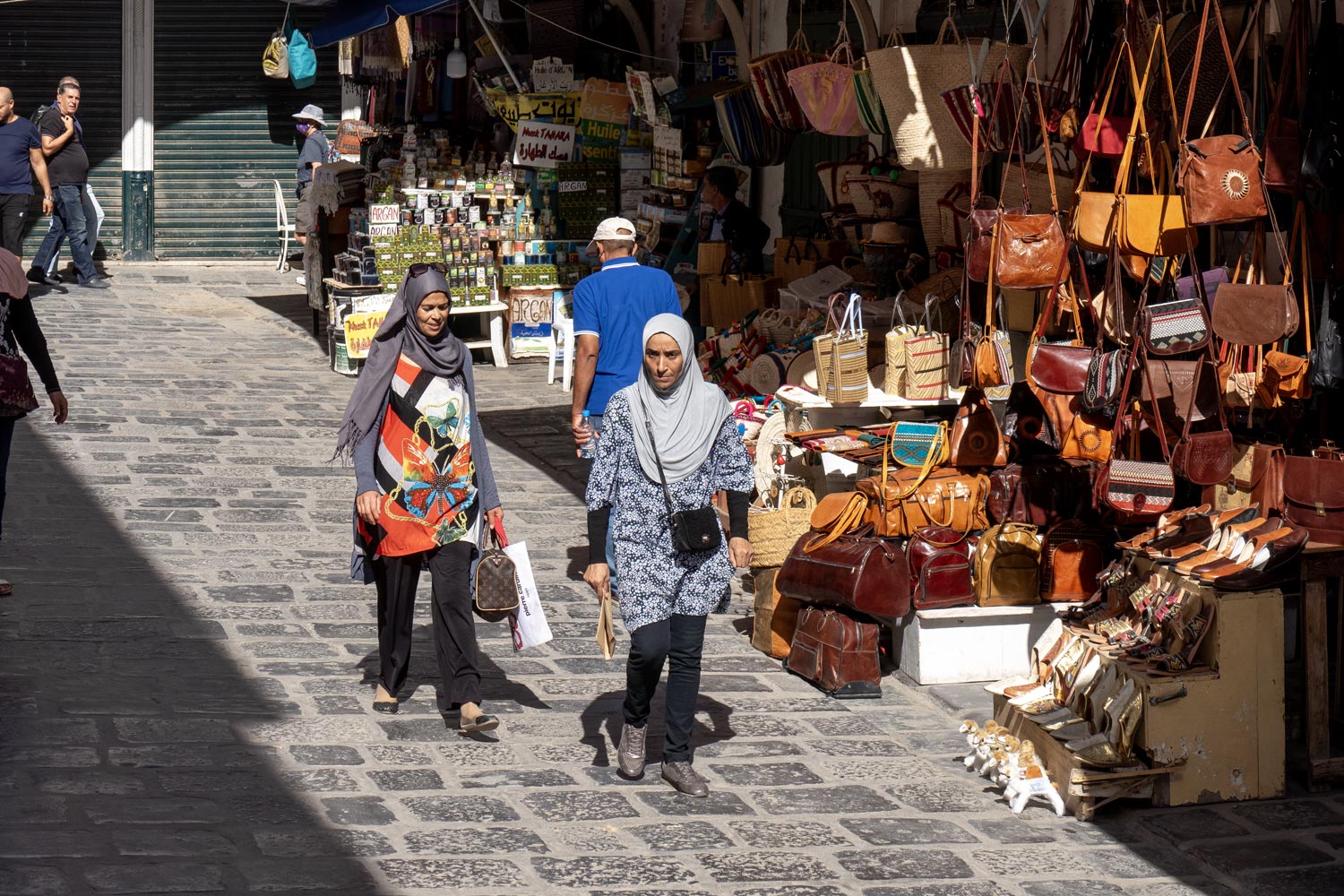
A couple of decent streets in the medina.
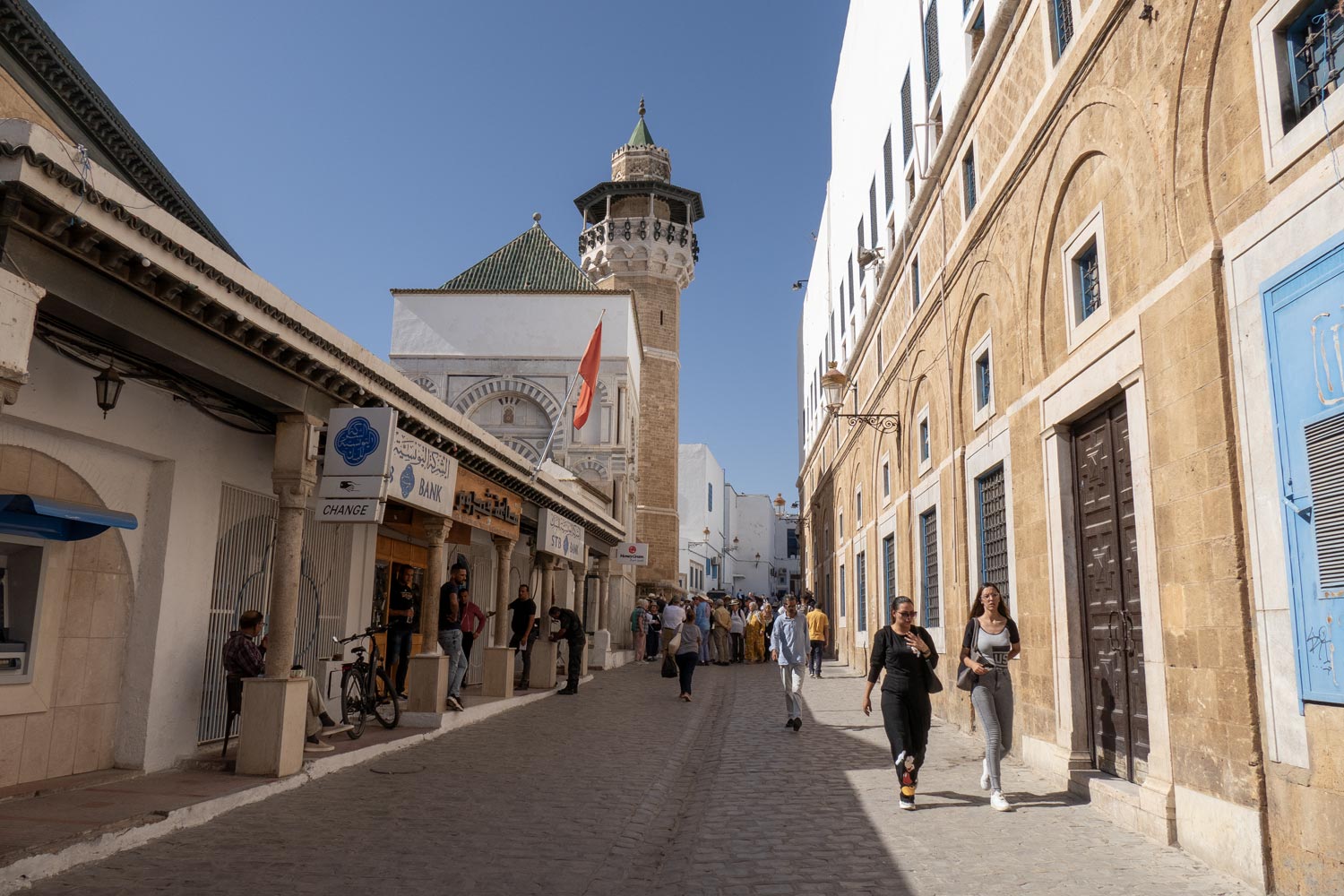
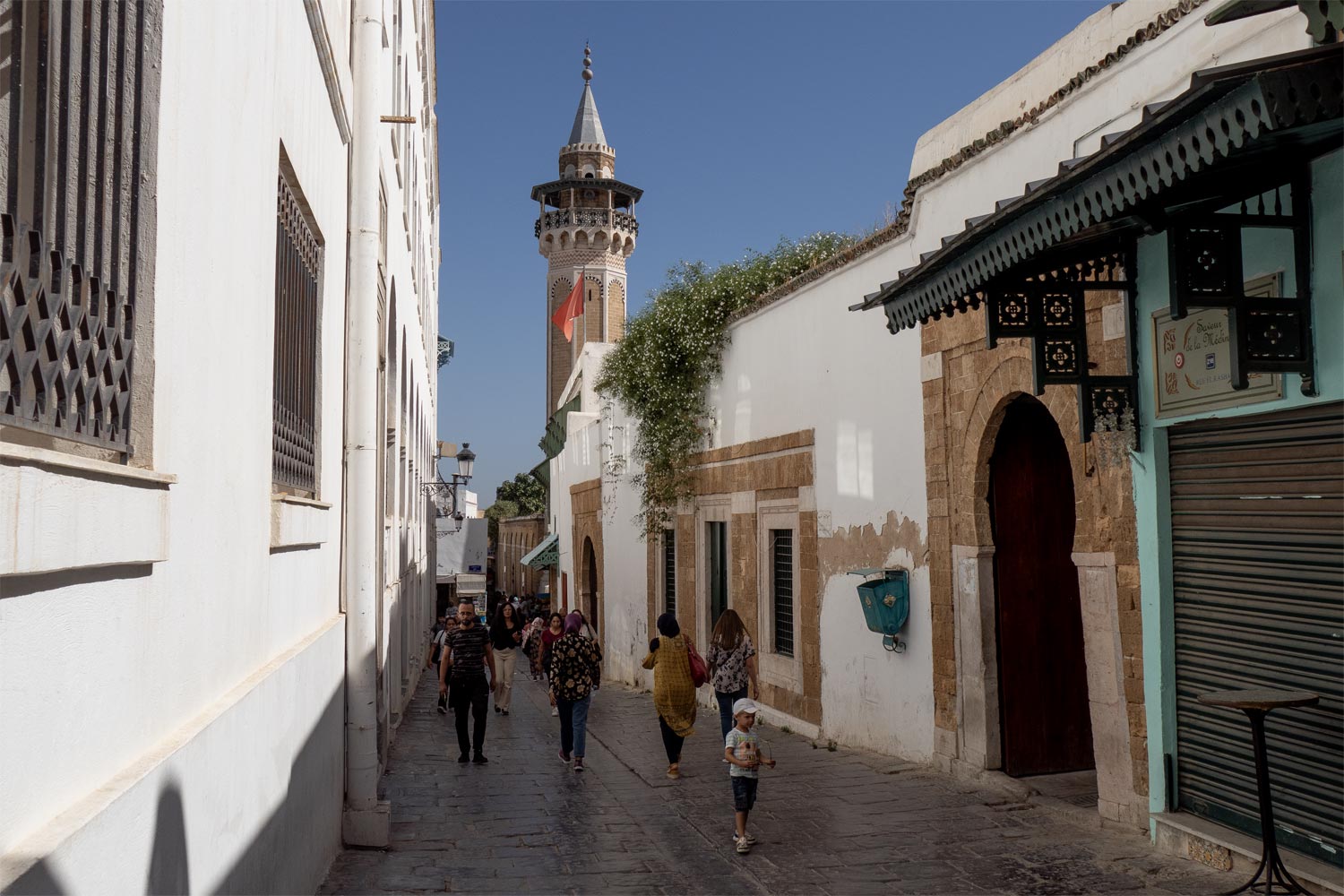
Of course, if you search hard enough, you can find a few unusual details. Here’s a house with an absolutely beautiful paint job.
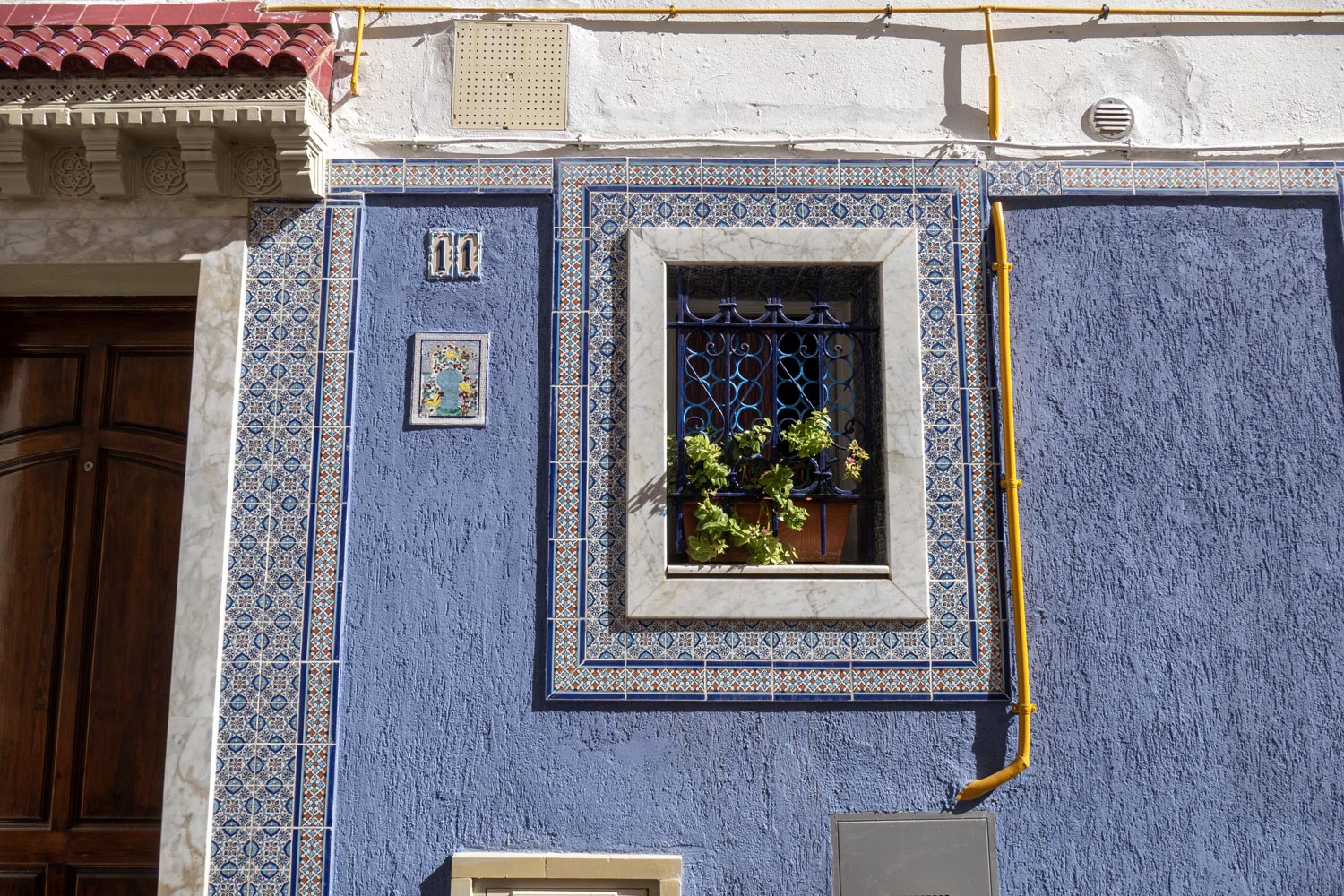
Here’s a charming street with canopies.
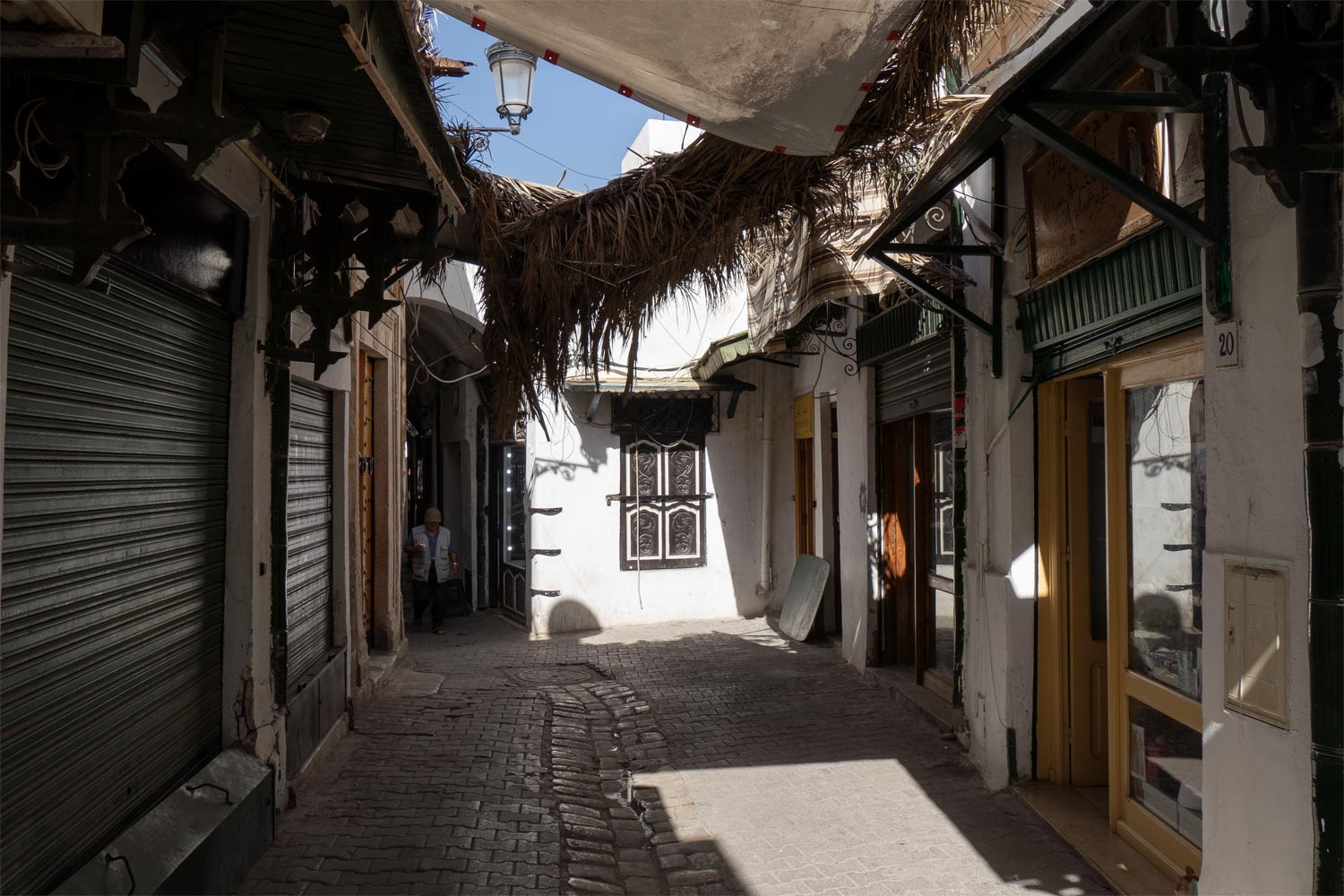
A morning glory vine hangs overhead.
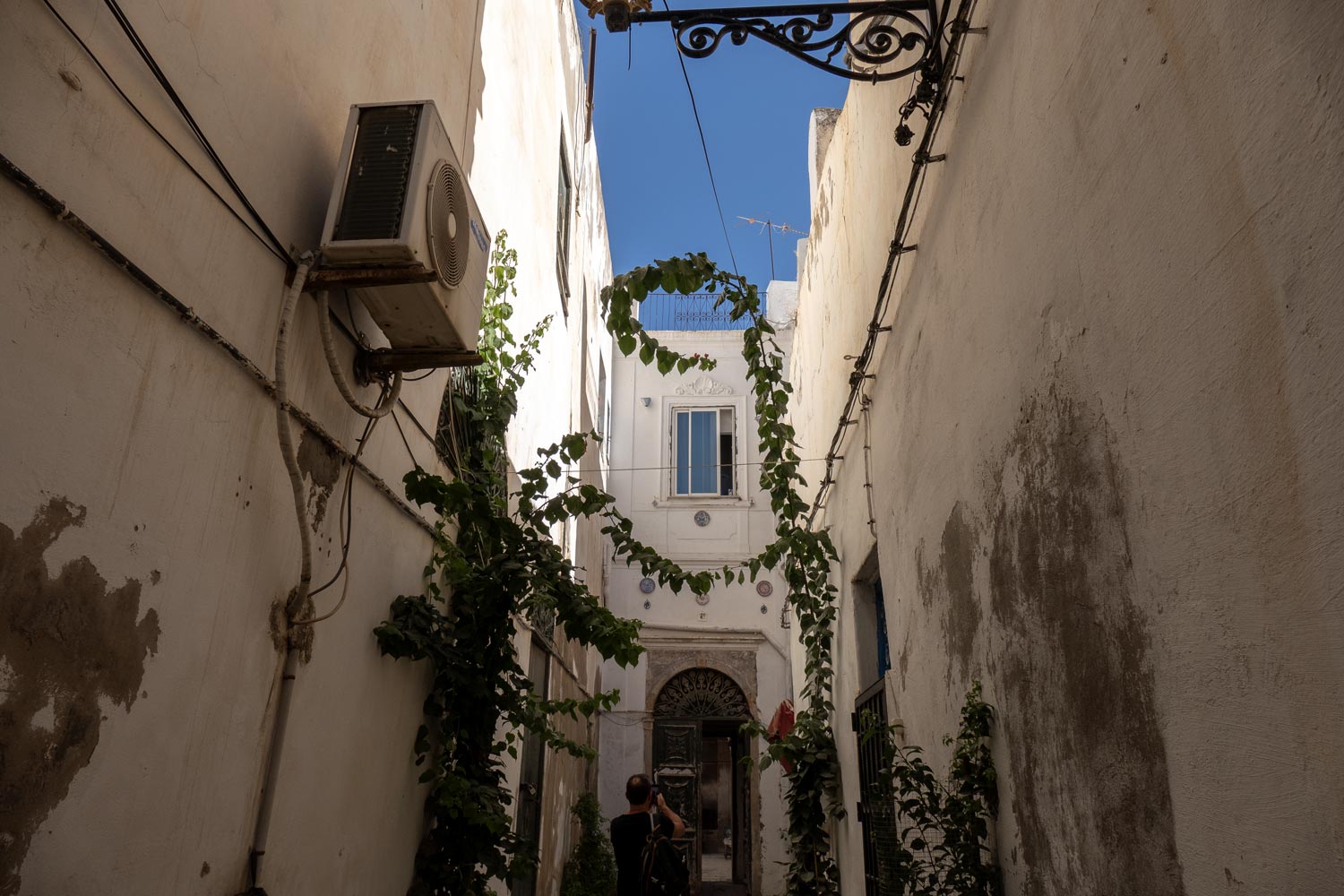
A cool map laid out with tiles directly on the wall.
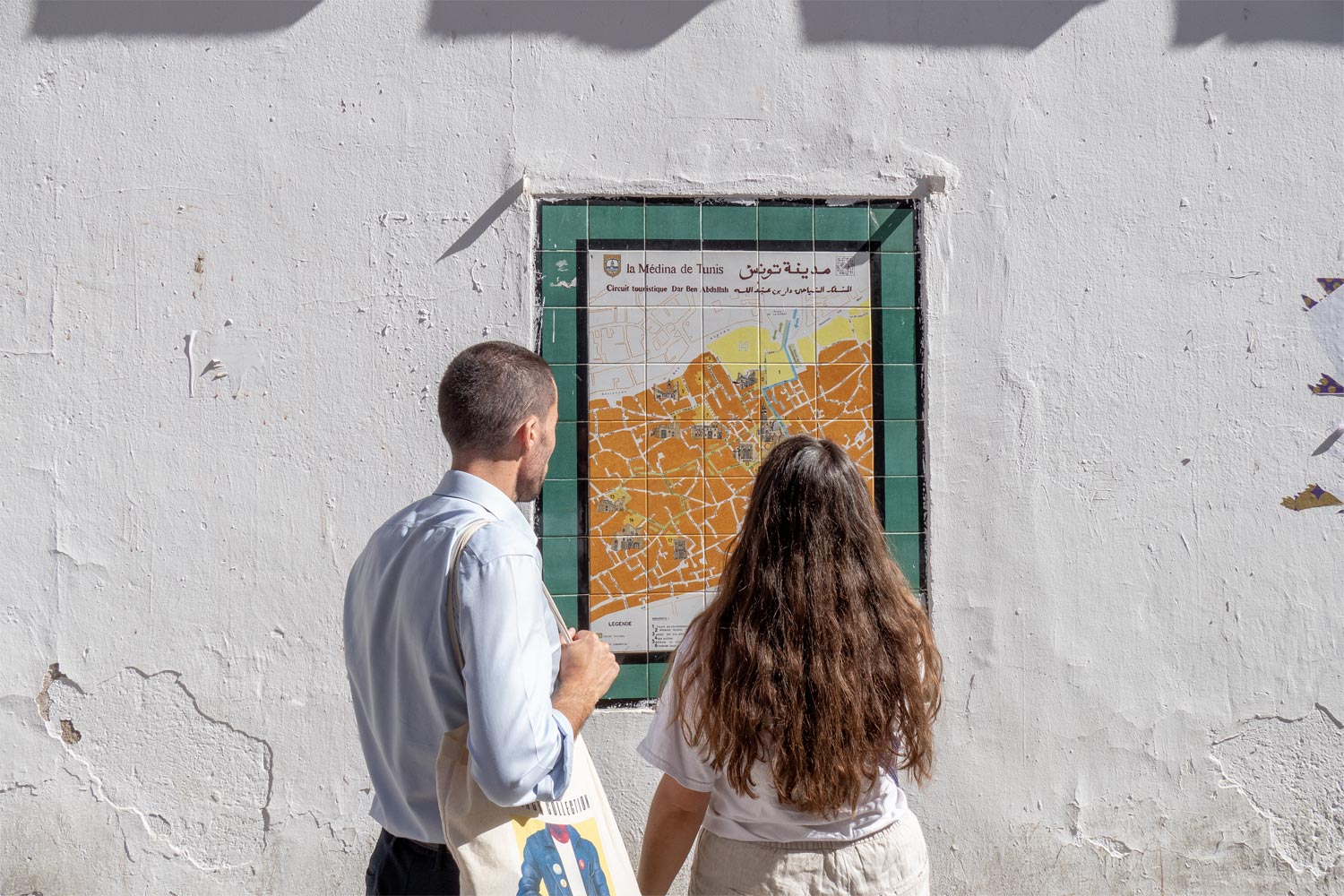
Somewhere among these streets is what Tunisians claim to be the oldest café in the world, called M’Rabet. It was supposedly established in 1628, and it’s even a gathering place for all the progressive Tunisian youth.
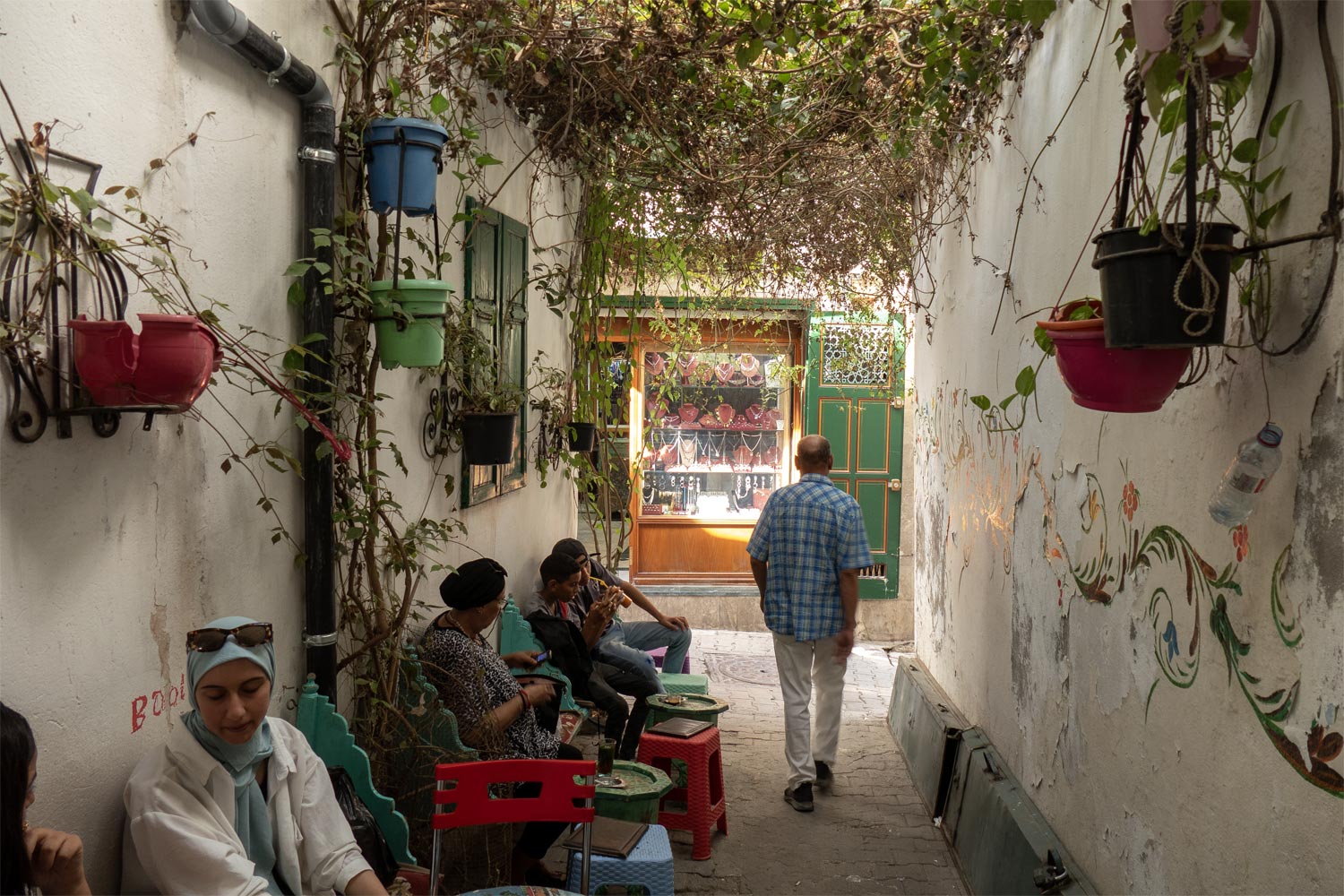
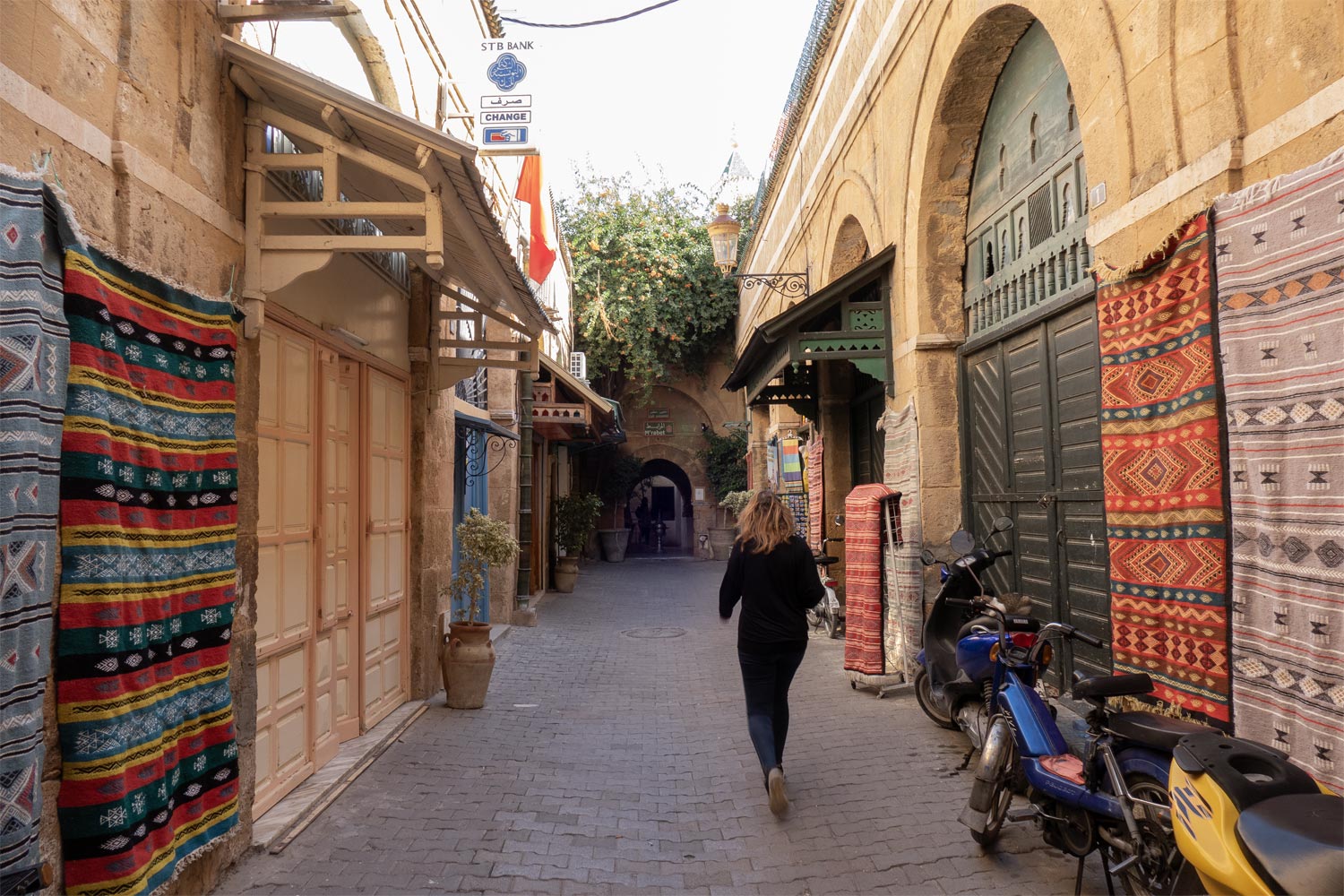
I don’t know how to explain this. But neither the oldest mosque with a university, nor the oldest café, nor even the house where Kandinsky lived—none of these evoke any emotions.
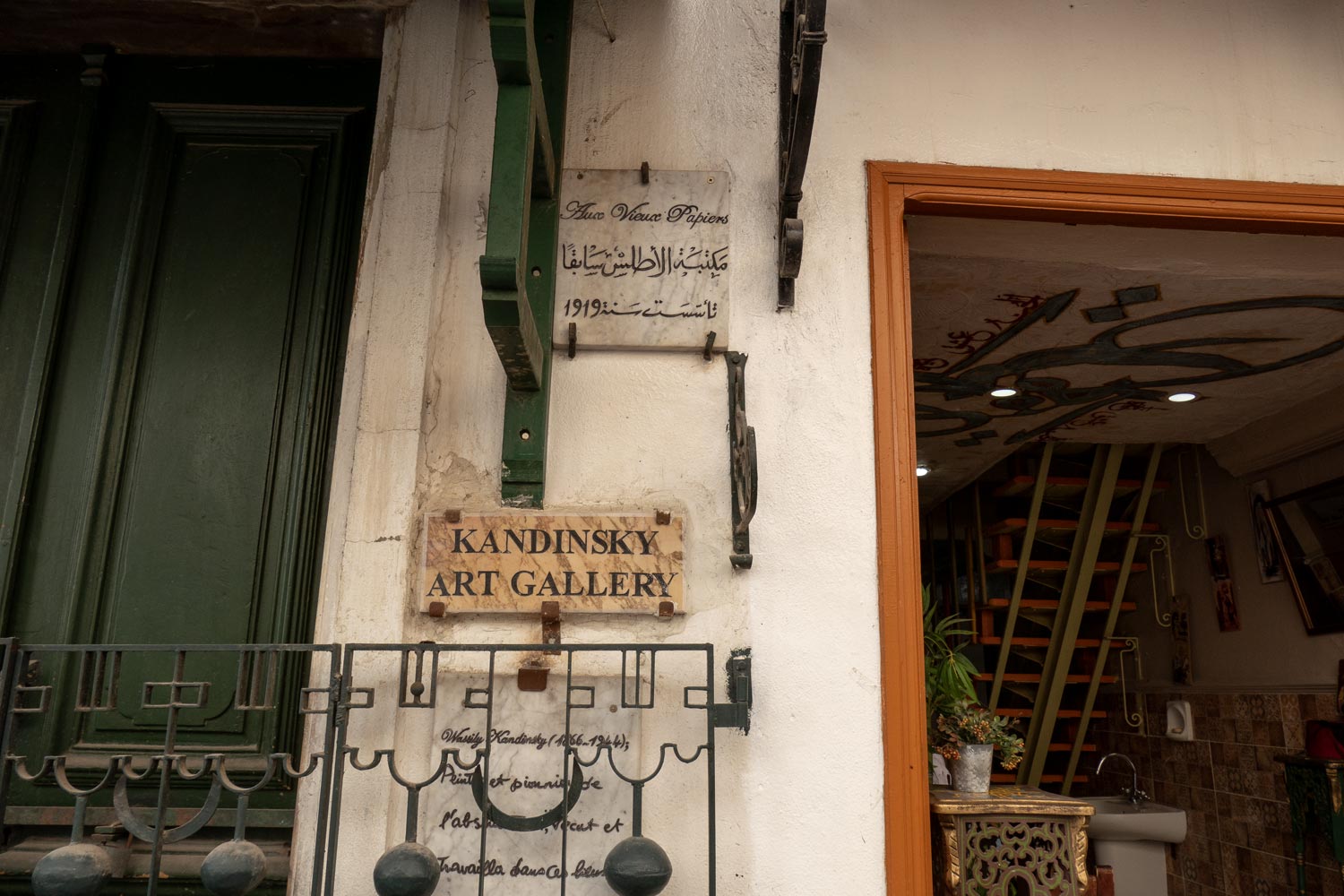
Tunis looks abandoned to its fate. The small gems that can barely be uncovered amid the stony monotony are merely nominal. Even from the rooftop, the medina of Tunis appears completely uninteresting.
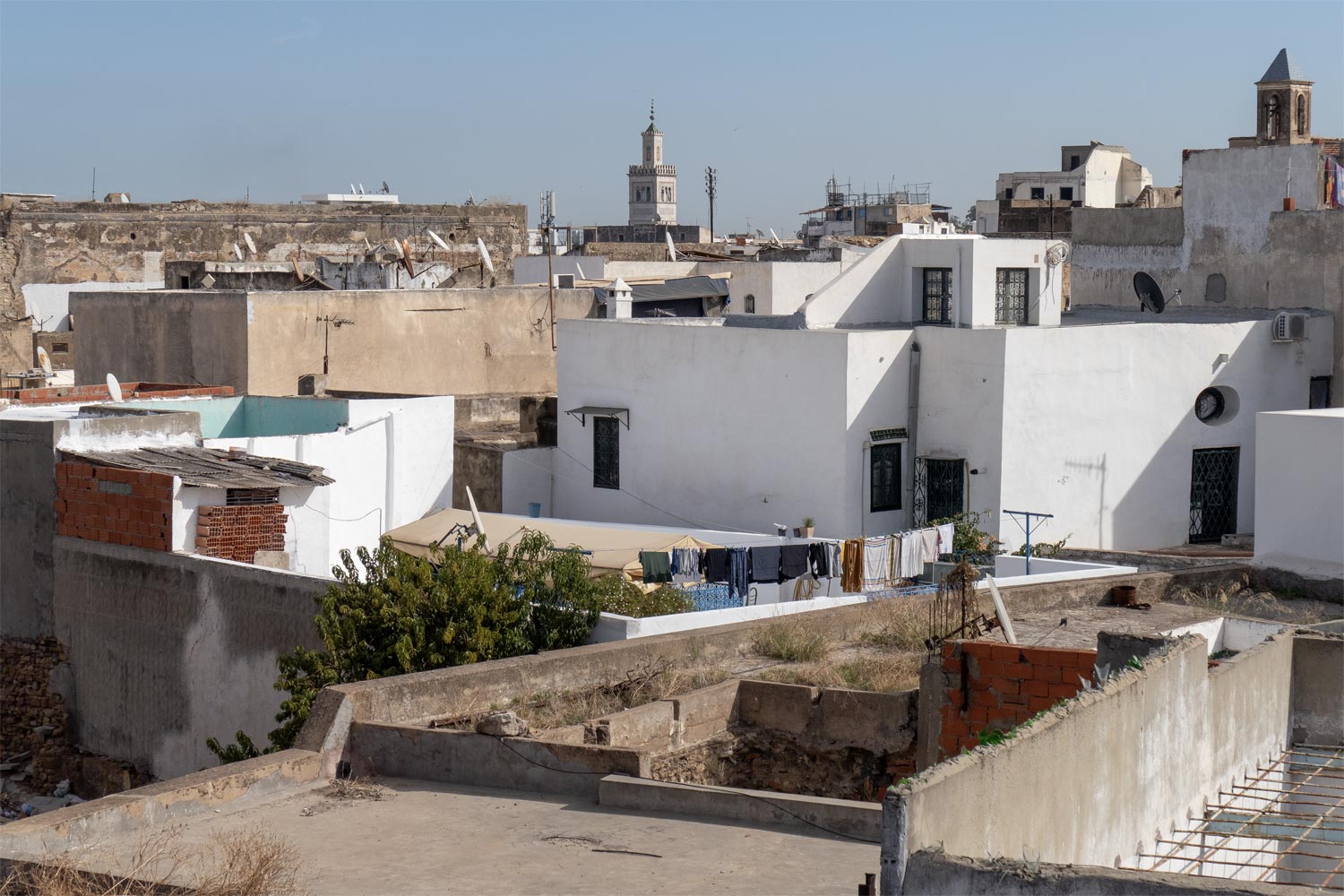
However, from the rooftop, you can at least see inside the houses. In fact, all these boxes are classic Arab caravanserais, meaning that the interiors are more interesting than the exteriors.
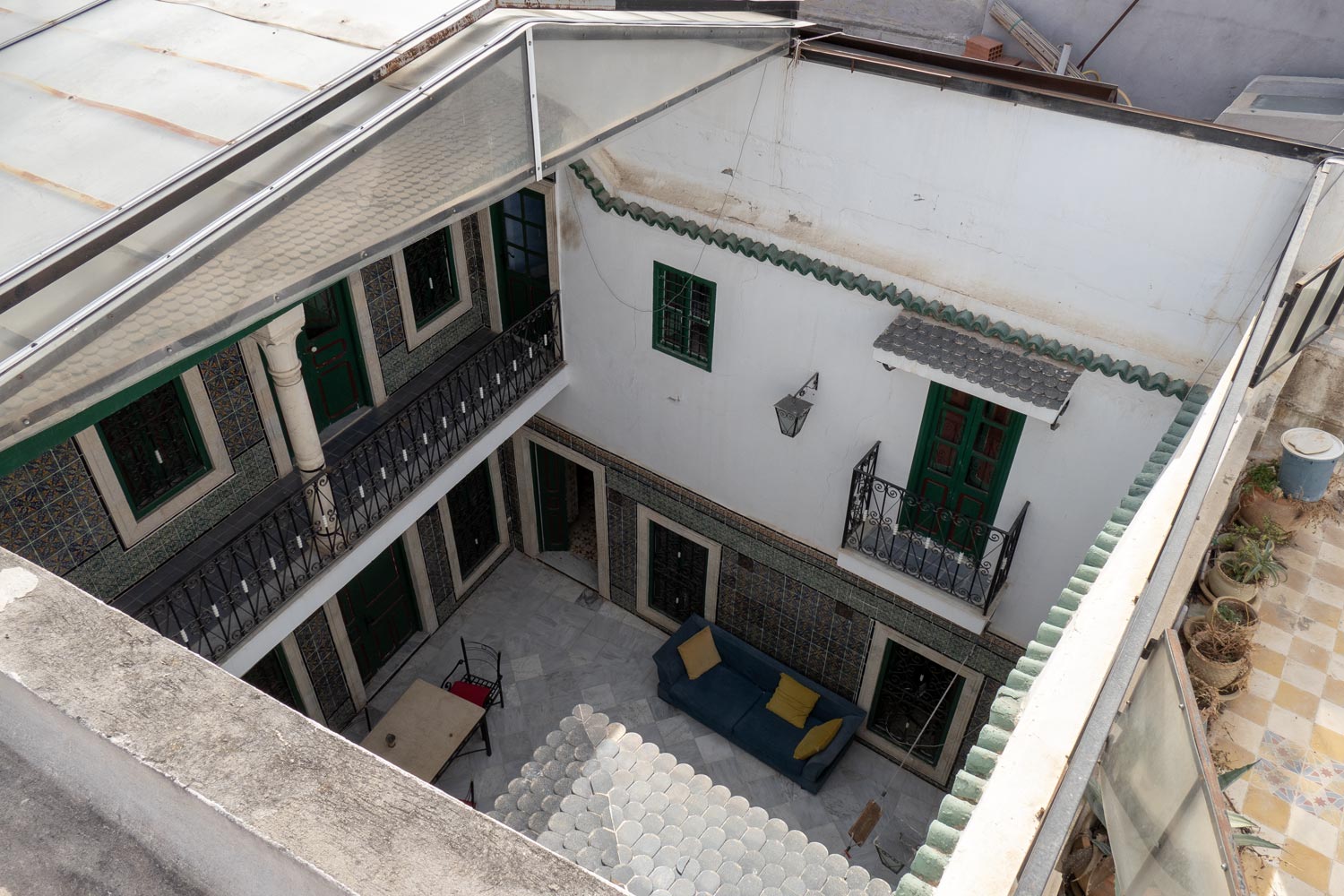
The French part
Only at the very edge of the medina did I find a couple of interesting Arab houses and a low arch.
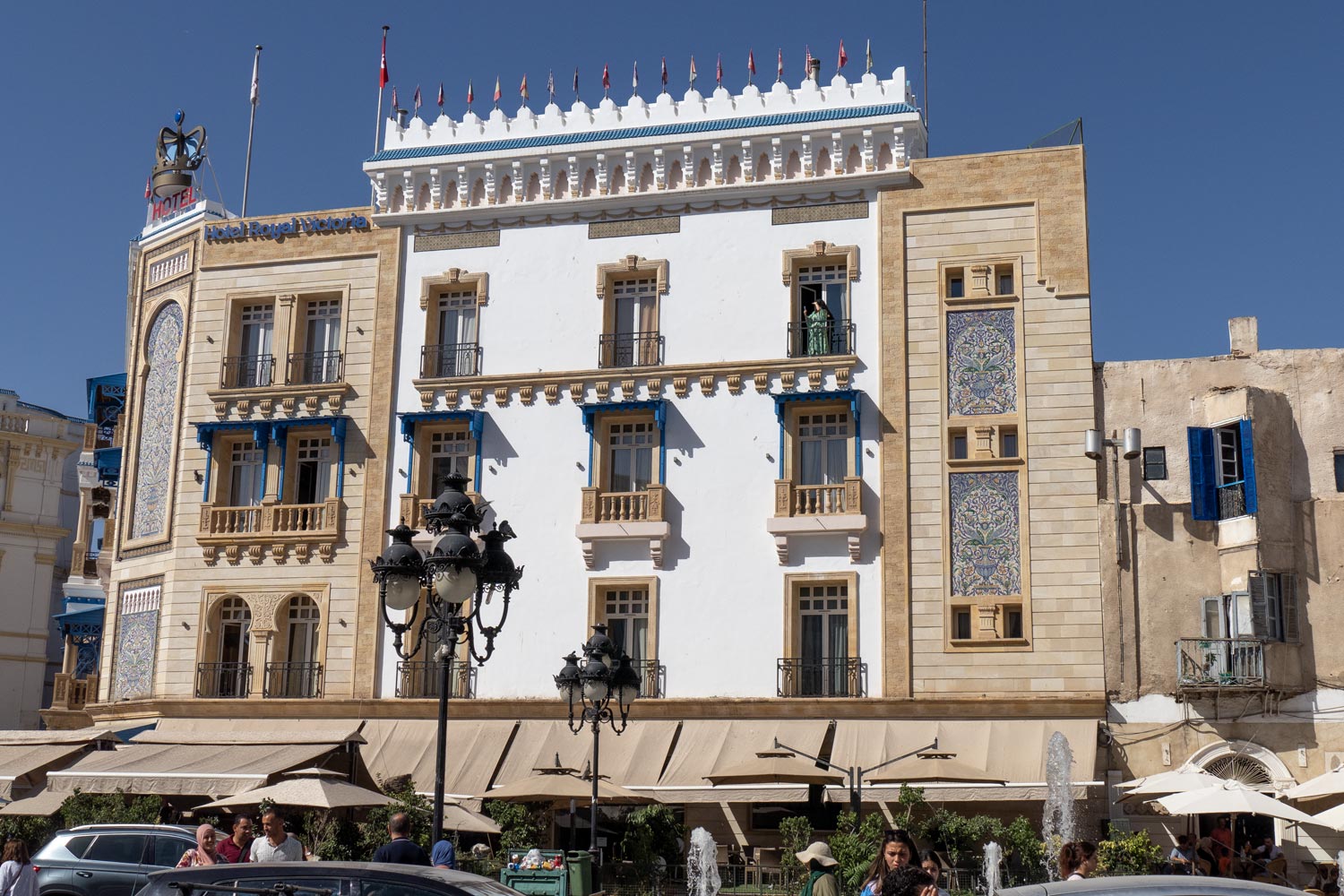
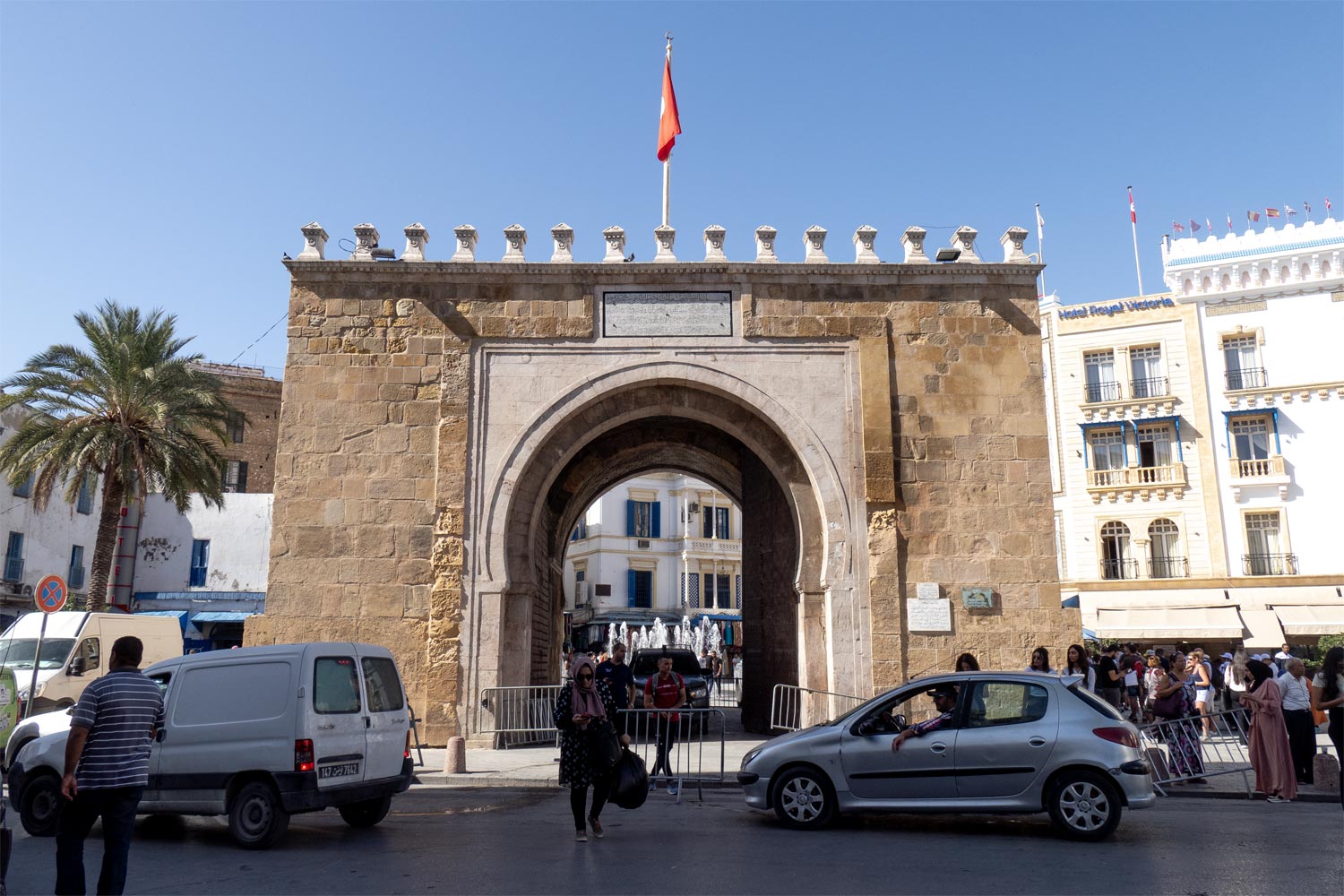
Here the Arab part of the city ends and the French part begins. It is also, to put it mildly, not in the best condition.
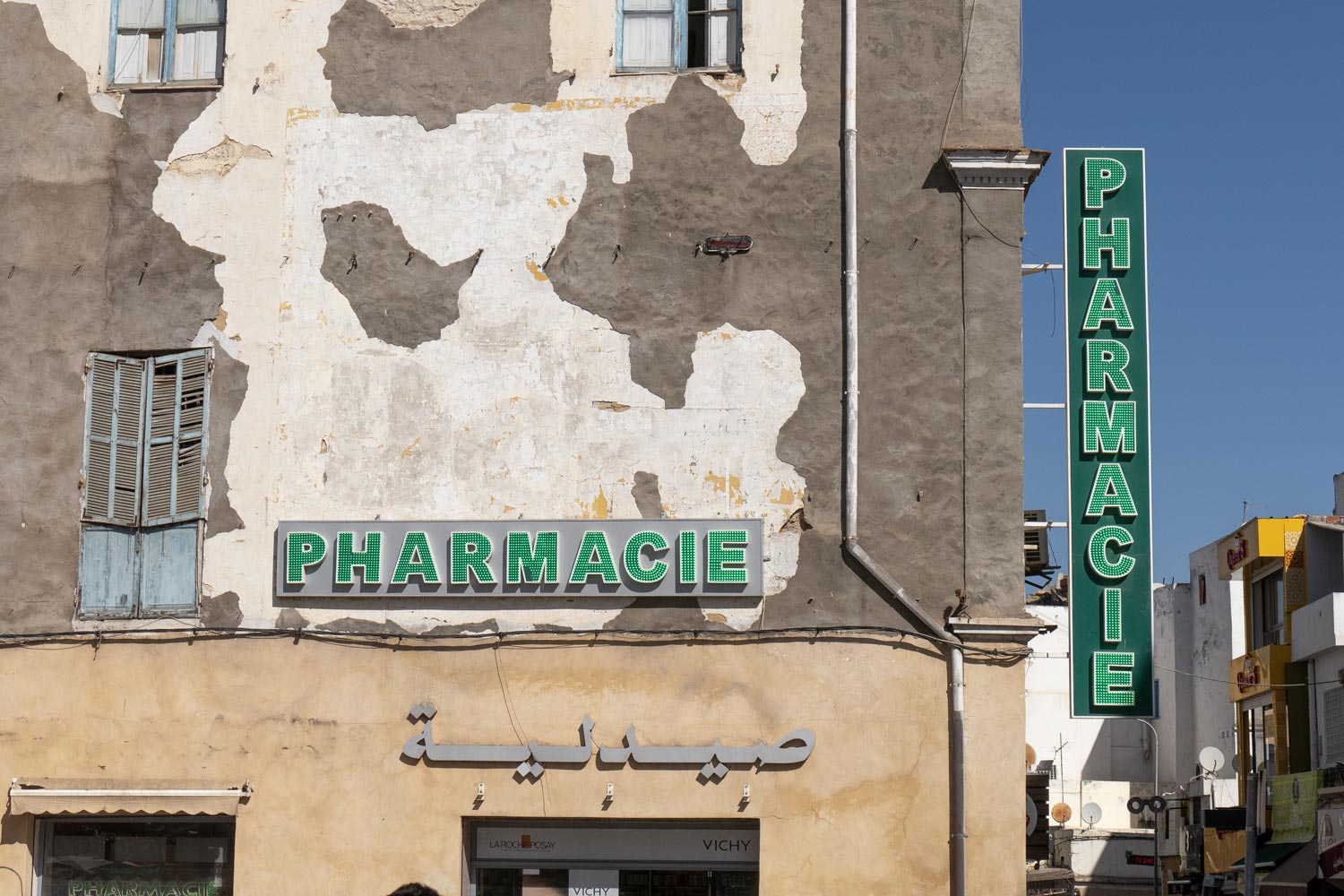
Above the trees, a sign appears in two languages: General Store. The inscription is duplicated on the sidewalk with broken tiles from the mid-20th century.
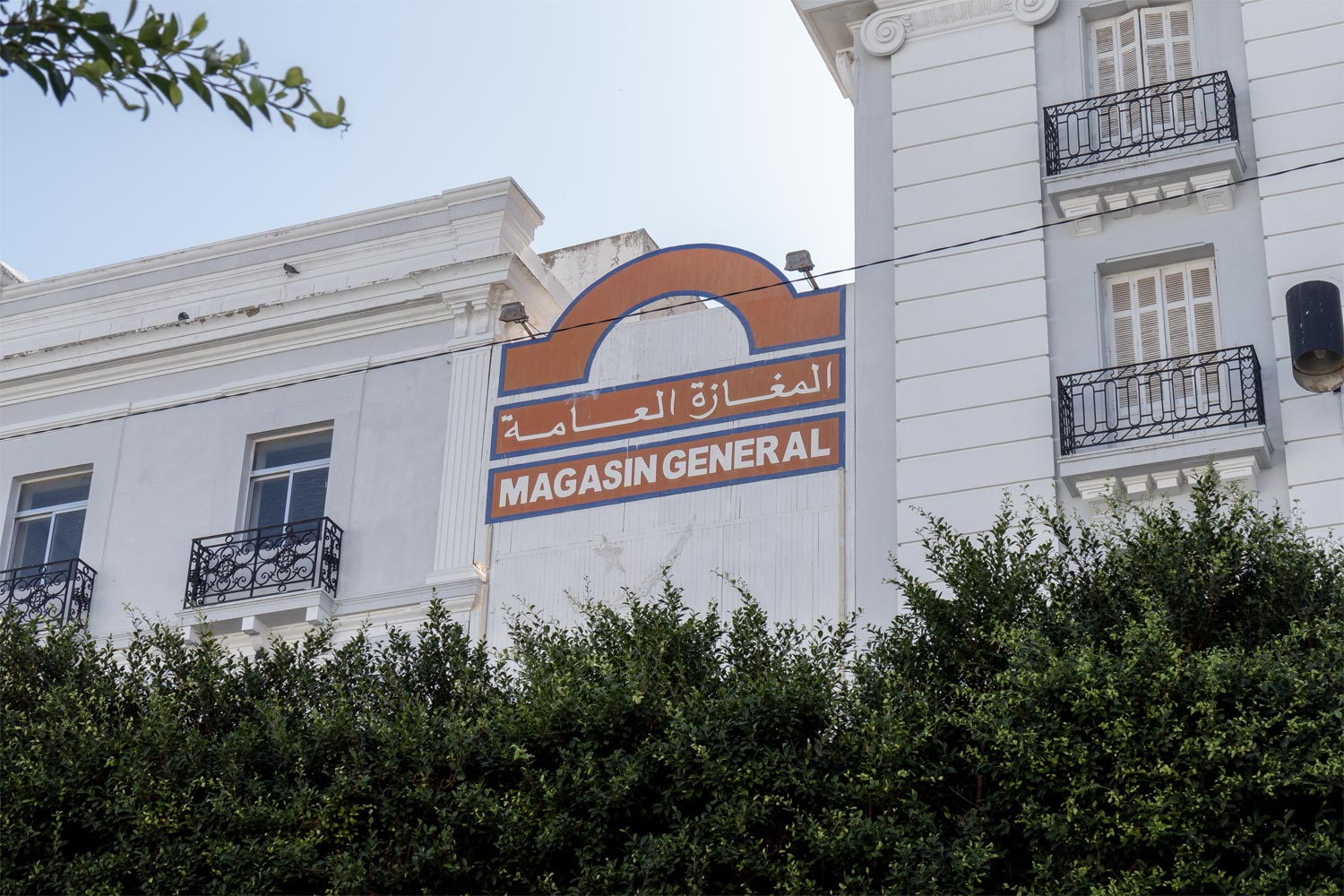
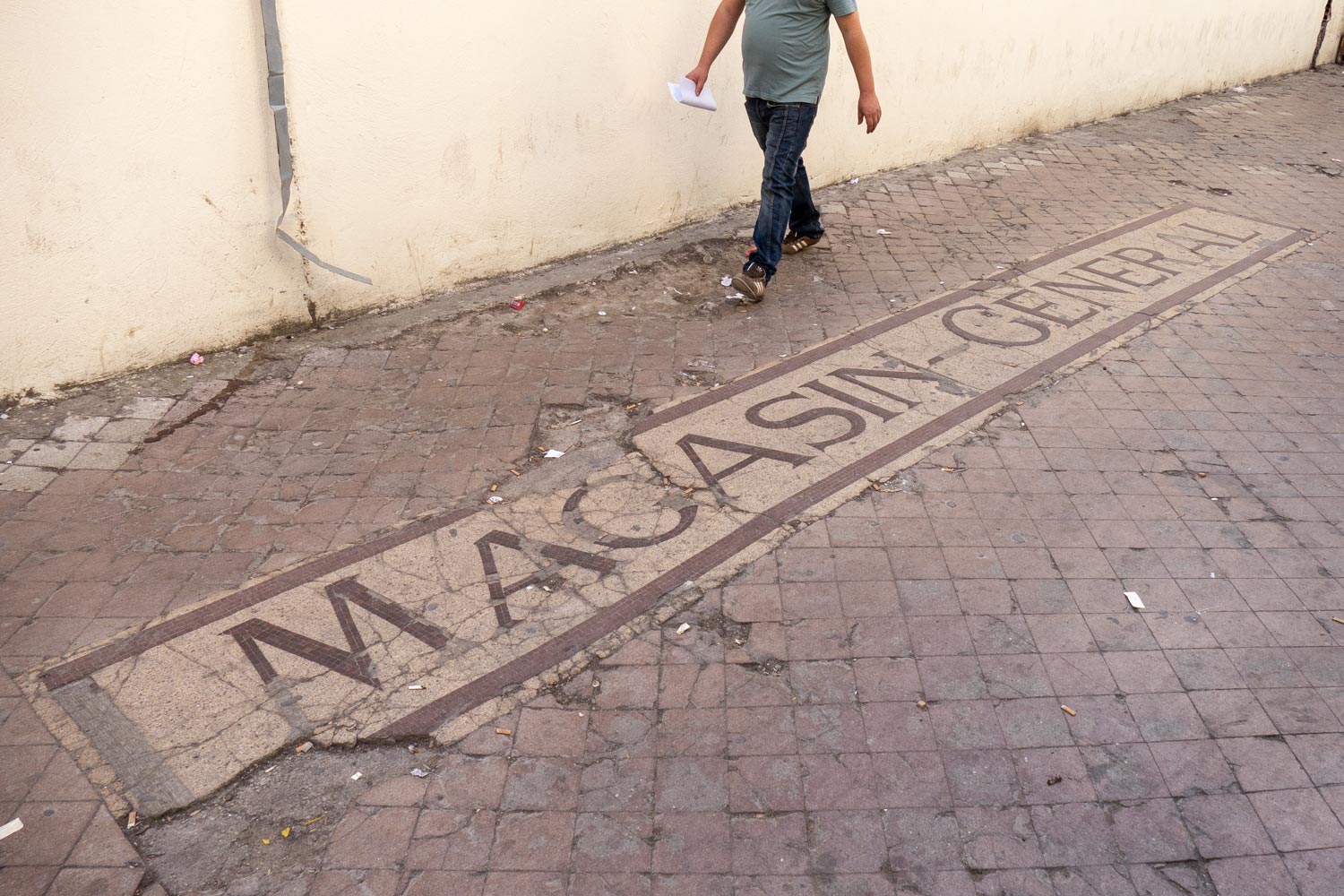
The enticing store turns out to be a dreadful rural shop inside, with half the shelves filled with pasta and the other half with canned goods. This is a top supermarket in Tunis.

Overall, the French part is okay. You can feel the remnants of past colonialism.
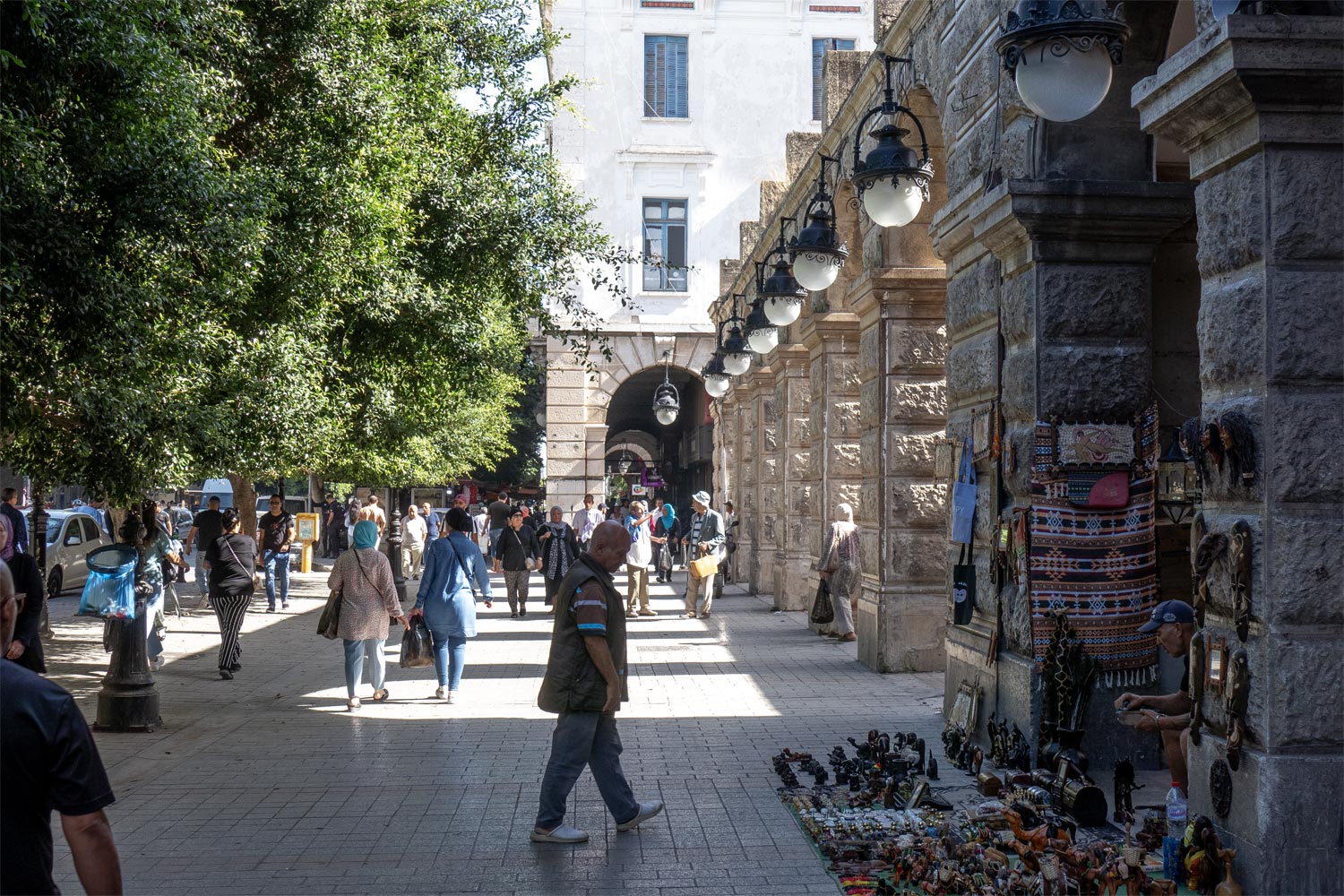
I’m not sure about the fairness of it, but colonies always had good architecture.
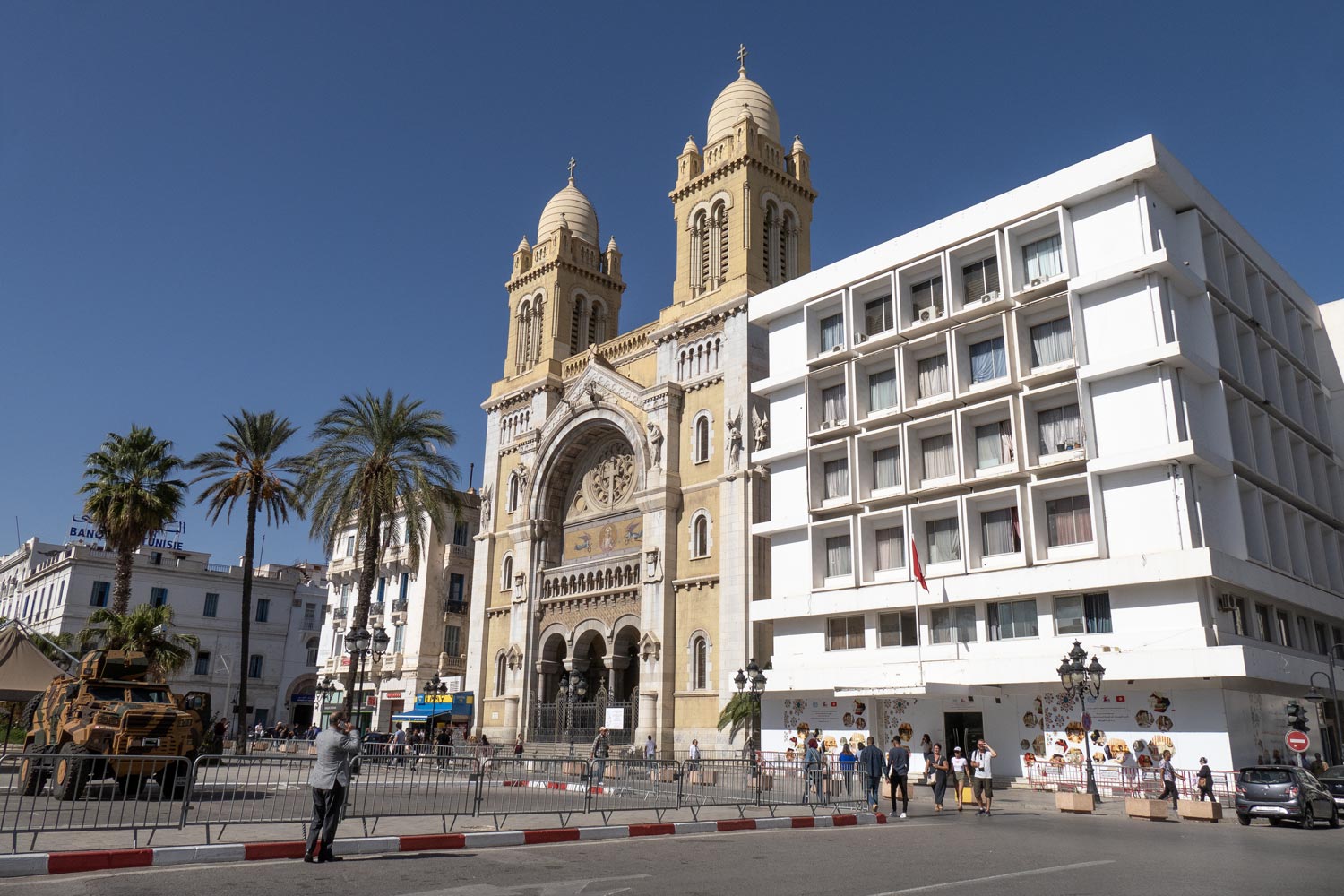
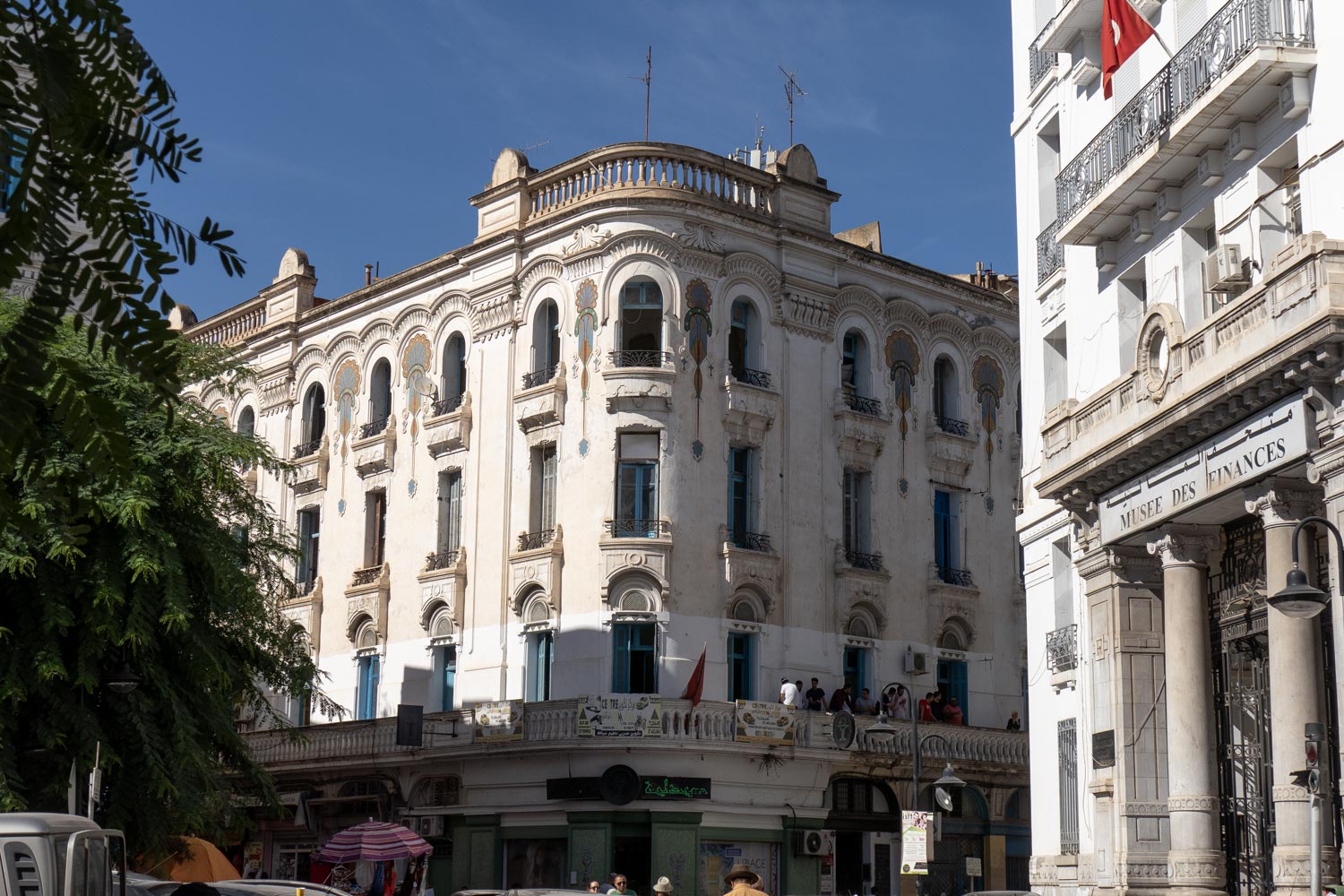
The French theater, built in 1901, still stands and remains popular. In the evening, lines of local intelligentsia form in front of it.
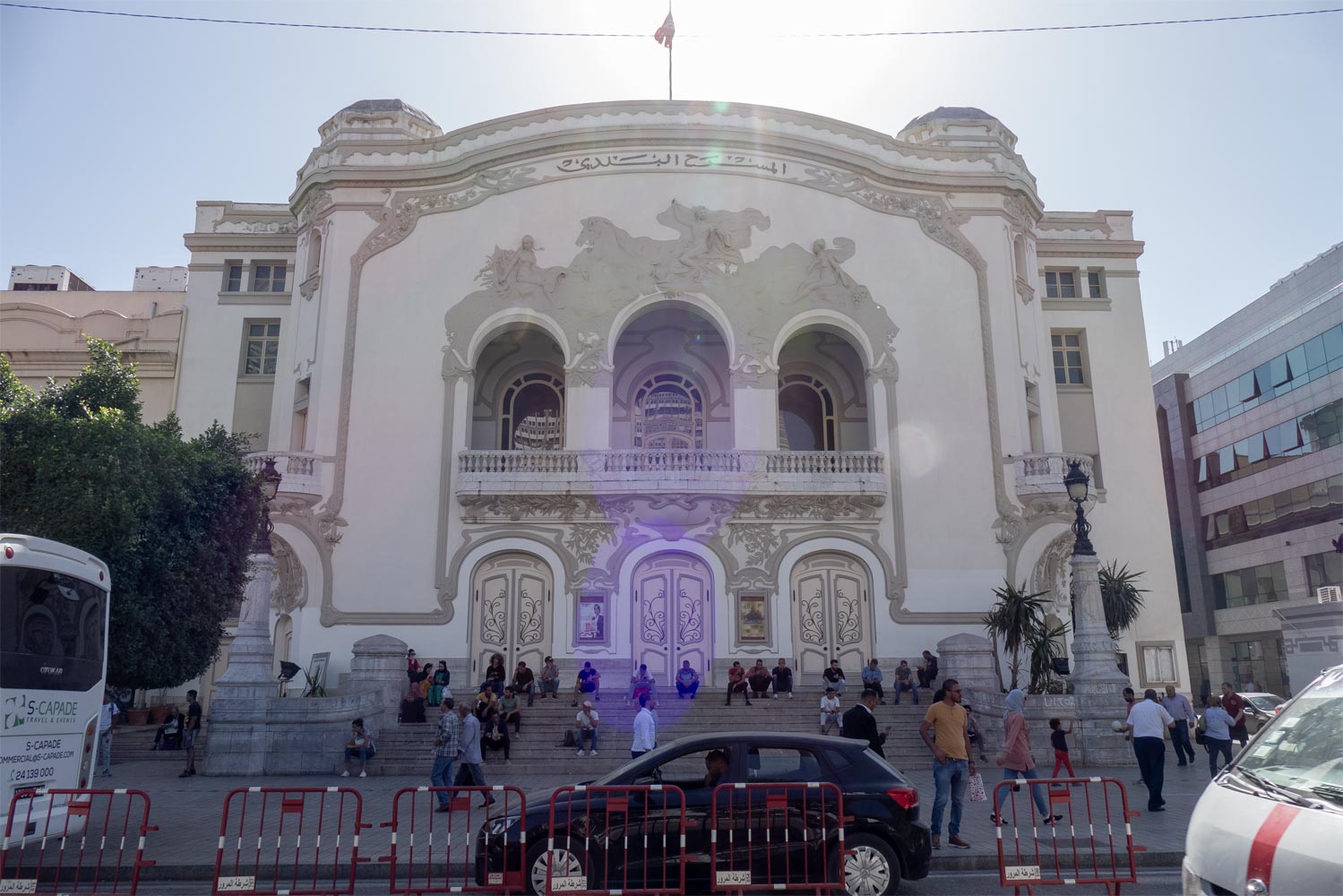
The largest hotel in the city (said to have terrible service).
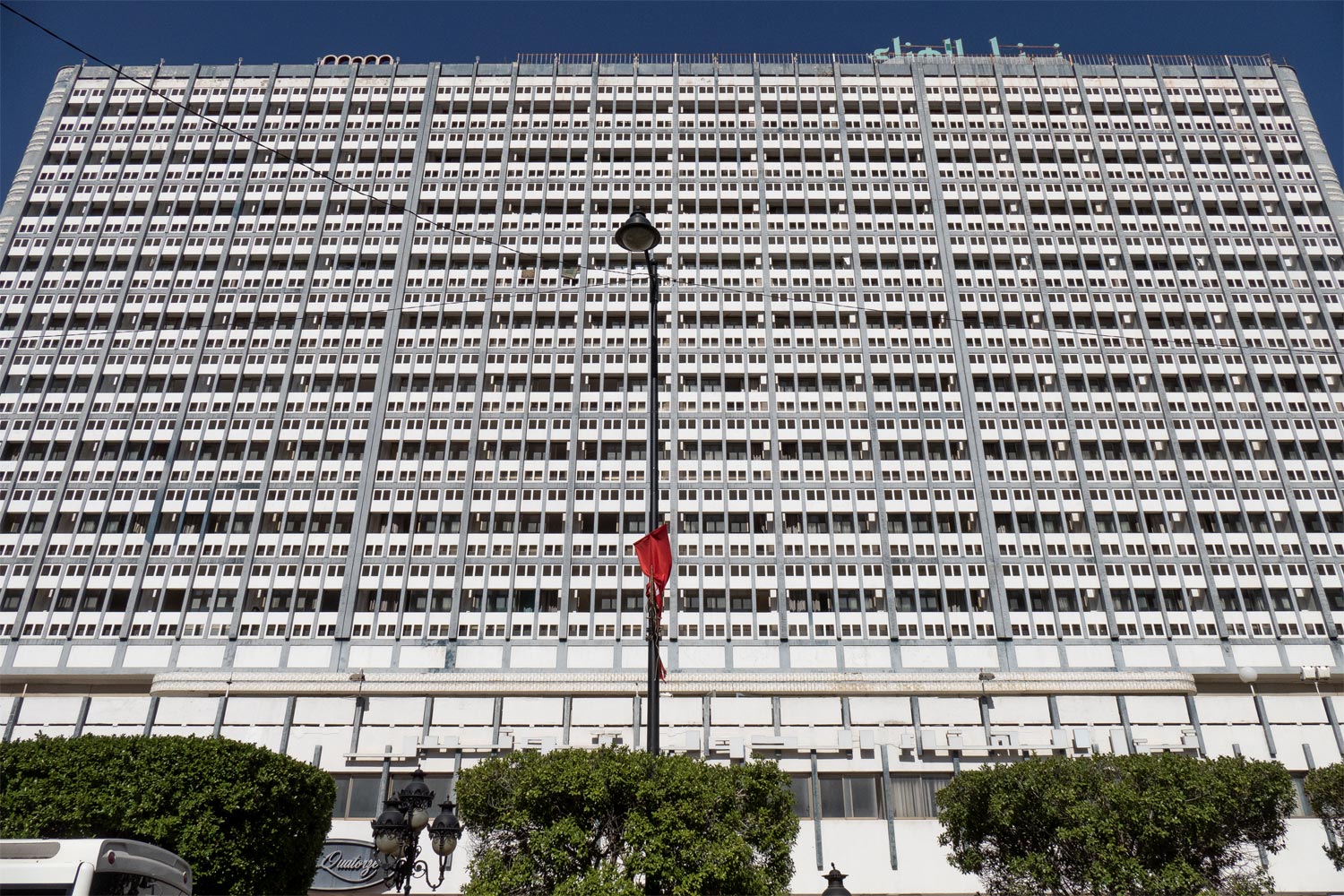
A green alley in the center.
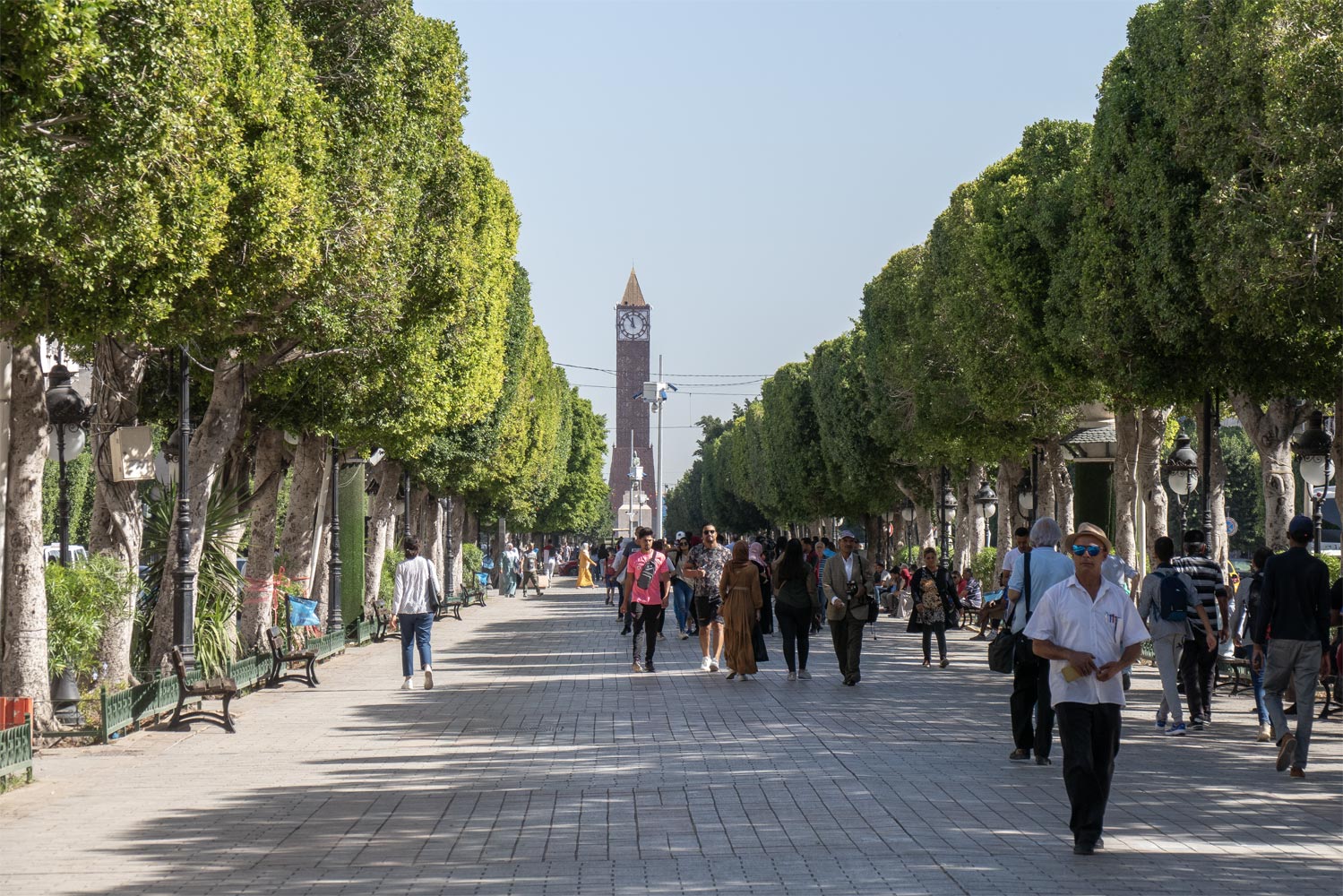
Everything is fine in the French part.
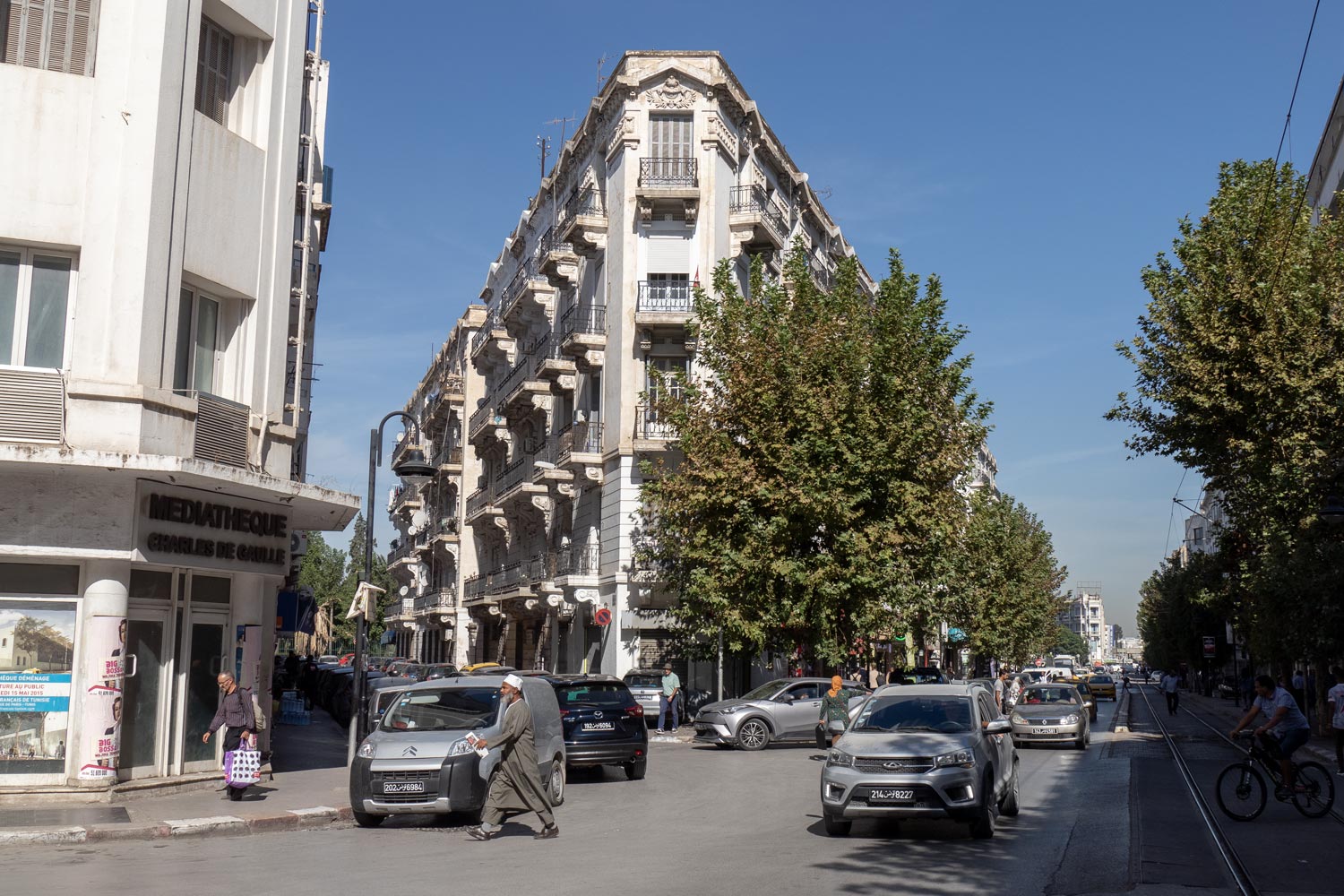
Indeed, in some places, it’s almost like Paris.
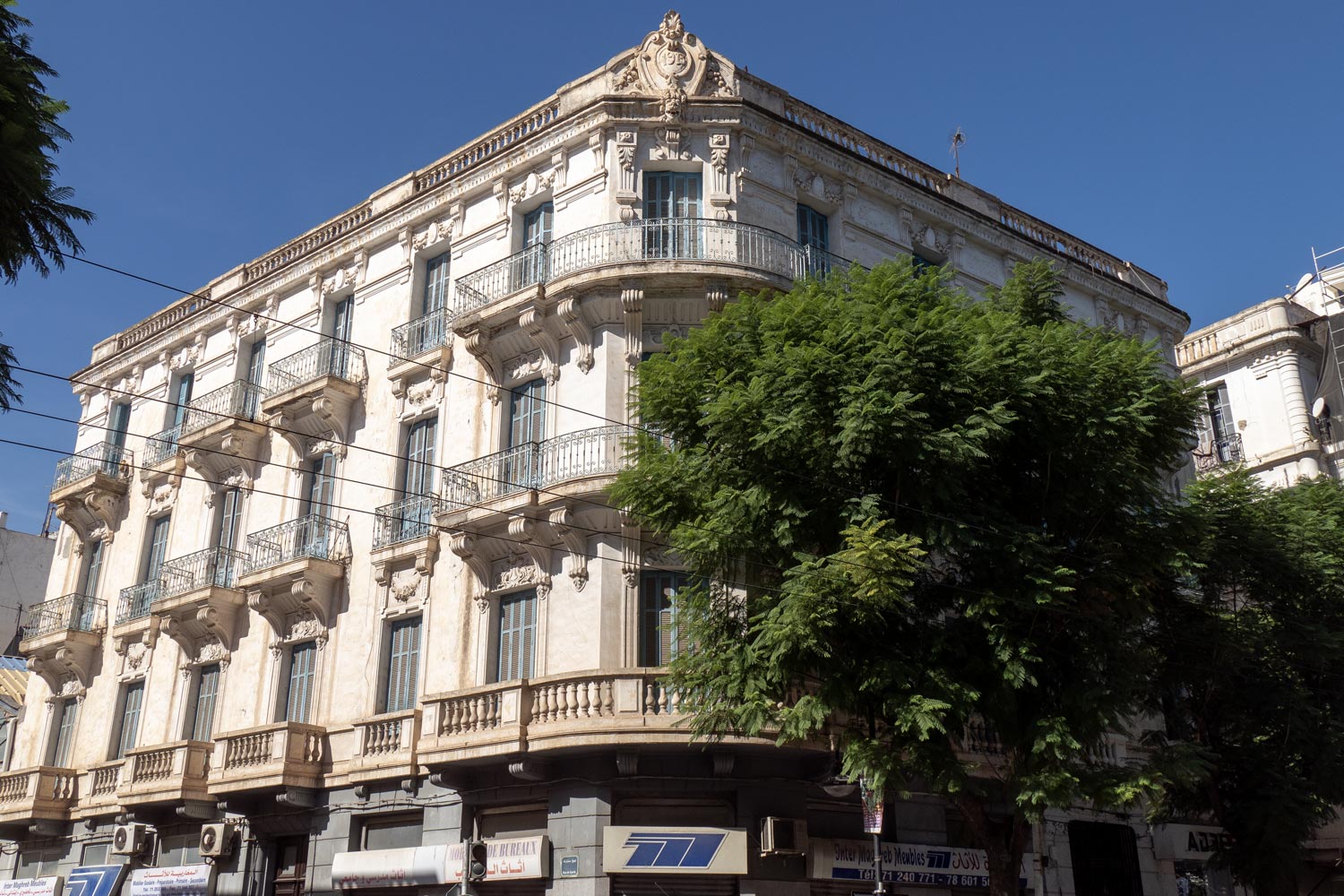
The French colonizers weren’t fools, after all. They miscalculated in just one thing: unlike the medina, it’s incredibly hot here.
